#bessie ferguson
Explore tagged Tumblr posts
Text

Bessie Stringfield (February 9, 1911 - February 16, 1993) became the first African American woman to ride her motorcycle across the US solo. She was credited with breaking down barriers for both women and African American motorcyclists.
She was born Betsy Leonora Ellis in Kingston, Jamaica to Maria Ellis, a domestic servant, and James Ferguson, her employer. They migrated to Boston, but both died of smallpox when she was five years old, she was adopted and raised as a Catholic. On her sixteenth birthday, her mother gave her a motorcycle, an Indian Scout. She started the motorcycle and easily mastered it. She made eight long-distance solo rides across the US. She earned money from performing motorcycle stunts in carnival shows. She was denied accommodations and was forced to sleep on her motorcycle at gasoline stations.
During WWII, she worked for the Army as a civilian motorcycle dispatch rider, carrying documents between domestic bases on her Harley-Davidson bike. The only woman in her unit, she completed rigorous training maneuvers. She was followed by a man in a pickup truck who ran her into a ditch, violently knocking her off her bike.
She wed and divorced six times. After she and her first husband were saddened by the loss of three babies, she had no more children.
She became a licensed practical nurse. She continued to ride locally and founded the Iron Horse Motorcycle Club. Disguised as a man, she won a local motorcycle race but was denied the prize money when she took off her helmet. Her other antics, including riding her Harley while standing in its saddle, attracted local press attention. Reporters called her, the “Negro Motorcycle Queen” at first and the “Motorcycle Queen of Miami.” She found joy in her pet dogs, some of whom paraded with her on her motorcycle.
The American Motorcycle Association opened the first Motorcycle Heritage Museum in Pickerington, Ohio, she was featured in its inaugural exhibit on Women in Motorcycling.
The AMA instituted the Bessie Stringfield Award to honor women who are leaders in motorcycling. She was inducted into the Motorcycle Hall of Fame. #africanhistory365 #africanexcellence
2 notes
·
View notes
Text
A Year in the Life of a Mole: Arthur Krumins’ 2020
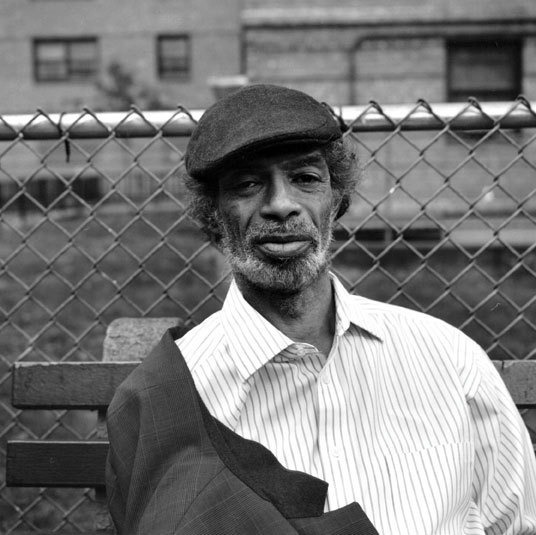
What a ridiculous year to try to sum up. The effects of the pandemic continue to be devastating to so many, both the virus itself and the isolation and weirdness of life with its effects. Time became a different element, and left the usual ways I counted the days to one side, in favor of a new routine. As I luckily worked from home, and tried to be a good parent to my one year old for most of the rest of my waking hours, the days took on a new rhythm.
I used to listen to a lot of new music on my hour-plus bus commutes to and from work. But now, I listen to it as background music with my work day at home, and more subdued old favorites in the early morning hours taking care of the baby for the morning shift. As well, because of all the changes and shifting realities I found myself turning to more calming and mostly instrumental works, although tempered with the occasional blast of cathartic noise or a pulse that inspires movement.
I paid more attention to pieces of music that create a sense of direction or flow, as they build on the particular highlights of each smaller moment they contain. I think in a sense, this was the year I truly entered middle age, for the good (reserving judgement a little more) and the bad (more aches and pains and an absolute need for coffee). Some records grew on me that initially seemed too sweet or even tempered to be true favorites. There’s also the pleasure in coming back to things that initially seemed interesting, but that I had left to one side in the course of the year.
Here’s the albums I ended up counting on, occasionally spurring me to write reviews, and often causing me to find a moment to be quietly thankful that they exist.
Records I listened to on the bus pre-shutdown, and that helped pull me through the work week:
youtube
Gil Scott-Heron and Makaya McCraven — We’re New Again (XL Recordings)
Earth Cult — NATCH 11 (Black Dirt Studios)
Jeff Parker — Suite for Max Brown (International Anthem)
The Giving Shapes — Earth Leaps Up (Elsewhere Music)
Settling into pandemic life, and letting my headspace get blasted and then soothed:
Temple of the Roses by Ash Brooks
Ash Brooks — Temple of the Roses (Flower Room)
Tough Age - Which Way Am I? (Mint)
White Poppy — Sound Meditation Vol 2 (Self-released)
Rootless — Docile Cobras (Flower Room)
Joan Shelley — Live at the Bomhard (No Quarter)
Matt Lajoie — Everlasting Spring (Flower Room)
Keeping me grounded as the pandemic just goes on and on:
Between No Things by Suso Sáiz & Suzanne Kraft
Suso Sáiz & Suzanne Kraft — Between No Things (Music from Memory)
Carlos Niño & Miguel Atwood-Ferguson — Chicago Waves (International Anthem)
Bessie Jones and the Georgia Sea Island Singers — Get in Union (Alan Lomax Archive)
North Americans — Roped In (Third Man)
I came to revisit things that I overlooked, or caught on to albums towards the end of the year reading the writing of others and now intend to keep listening to:
Strange Lights Over Garth Mountain by Gwenifer Raymond
Gwenifer Raymond — Strange Lights Over Garth Mountain (Tompkins Square)
Lisa/Liza — Shelter of a Song (Orindal)
Arthur Russell — Sketches for World of Echo: June 25, 1984 live at Ei (Audika)
Brother Theotis Taylor — s/t (Mississippi)
Benny Yurco — You Are My Dreams (PIAPTK)
Qu’ran Shaheed — Process (Preference)
Spencer Cullum’s Coin Collection — s/t (YK)
Nathan Salsburg — Landwerk No. 2 (No Quarter)
Allysen Callery — Ghost Folk (cosirecords)
Gordon Koang — Unity (Music in Exile)
Arthur Krumins
#yearend 2020#dusted magazine#arthur krumins#gil scott-heron#makaya mccraven#earth cult#jeff parker#the giving shapes#ash brooks#tough age#white poppy#rootless#joan shelley#matt lajoie#suso saiz#suzanne kraft#carlos nino#miguel atwood-ferguson#bessie jones and the Georgia sea island singers#north americans#gwenifer raymond#lisa/liza#arthur russell#brother theotis taylor#benny yurco#Qu’ran Shaheed#spencer cullum#spencer cullum's coin collection#nathan salsburg#allysen callery
6 notes
·
View notes
Text
Stone Branch 08.24.1923
Community news for #StoneBranch in #LoganCounty #WV (1923) #Appalachia #history #genealogy
A correspondent named “Three Pals” from Stone Branch in Logan County, West Virginia, offered the following news, which the Logan Banner printed on August 24, 1923:
We are sorry to say that Chester Curtis is on the sick list.
Mrs. McKenzie and Mrs. Smith were calling on Mrs. Williamson Sunday evening.
Mrs. Stiltner and Mrs. McComas were calling on Mrs. Stiltner Sunday.
Martha Roberts has gone to…
View On WordPress
#Appalachia#Bessie Dean#Braeholm#Chester Curtis#Cincinnati#genealogy#history#Logan Banner#Logan County#Nellie McKennzie#Nellie Stiltner#Norma Saunders#Ohio#Pearl Mobley#Rebecca McKenzie#Ross Smith#Ruby Lucas#Sadie Ferguson#Sherman Hobbs#Stone Branch#West Virginia
1 note
·
View note
Text
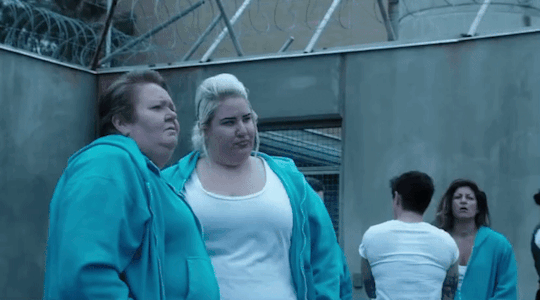
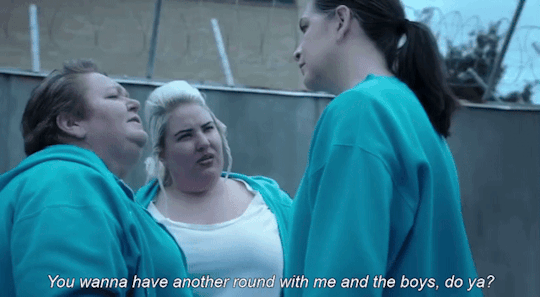
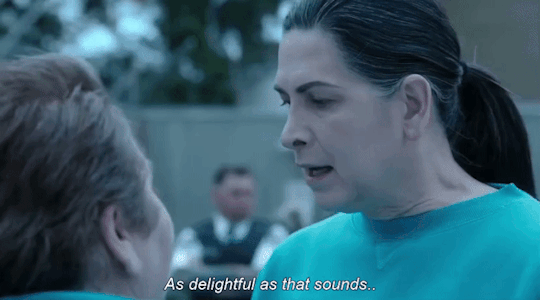
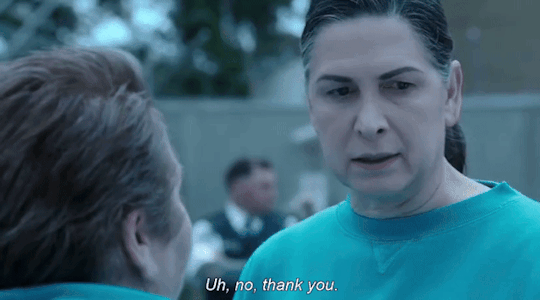


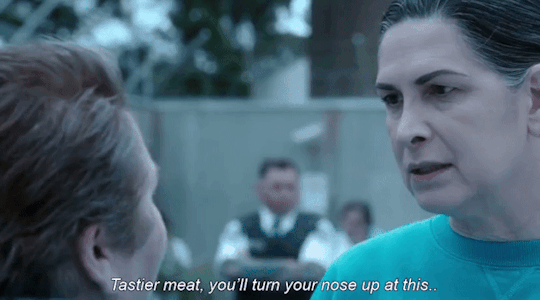
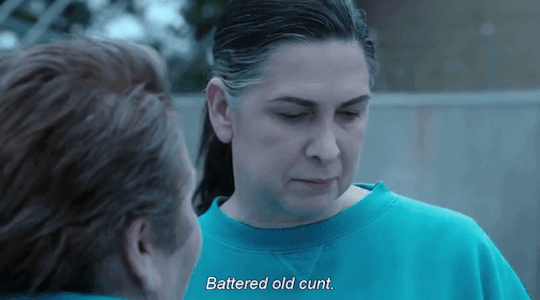
4x05 “love and hate”
#girls that describe their vagina like this 😻#i understand why she said it but still-#joan ferguson#pamela rabe#lucy gambaro#juice gambaro#sally anne upton#stella radic#bessie holland#wentworth#wentworth prison#my gifs
1 note
·
View note
Note
Do u think Charlotte Hope will have her big break after TSP like Rebecca Ferguson and Jodie Comer? Ruairi O’Connor has already been cast in 3 productions will lots of A-list co-stars. I wonder the same about Charlotte because her acting hasn’t been as good as Rebecca and Jodie’s imo.
Hi there!
I’m going to have to be pretty honest and say no. I don’t think she has the same level of acting skills as Rebecca Ferguson, Jodie Comer or even Eleanor Tomlinson. If anything I think apart from Ruairi O’Connor, I believe that Sai Bennett and Stephanie Levi-John might be the breakout female stars of this production. I also think that Chloe Harris (Bessie Blount) has some productions in the wing and might get more with this show and maybe Alice Nokes depending on what she’s given in the last episode as all of these actresses have shown they can act with the little they’ve been given and are very expressive too, Alice has also done a few notable projects, so this might boost her career abit more.
I don’t want to be too mean about Charlotte, but I think if she sticks to antagonist roles, she will have a steady career and there were sometimes in the show that she had a few seconds each episode of promise, but in my opinion you need to have more range in order to succeed and I don’t feel Charlotte has mastered that yet, but she’s a pretty woman so will probably be cast in a few productions, but it’s debatable if she will be the star of another production again since the ratings for this show didn’t do that well and the fact that her supporting cast were out acting her on many occasions might play apart in whether she will get more roles.
Thanks for the ask, Anon!
5 notes
·
View notes
Text
March 4, 2020
Cora Ann Neikirk, 87

Cora Ann Neikirk, age 87, of North Wilkesboro, passed away Friday, February 28, 2020 at Wilkes Senior Village.
She was born October 10, 1932 in Wilkes County to Gordon Russell and Maggie Gray Godbee. Cora was retired from Tyson Foods. She loved to do crafts. Ms. Neikirk was preceded in death by her parents.
Surviving are her children, Al Davis and spouse Annie of Texas, Linda Norris and spouse Lee of Wilkesboro, Tony Davis and spouse Joyce of Moravian Falls, Debbie Smith and spouse Shep of Taylors, South Carolina; thirteen grandchildren; a number of great grandchildren; and a number of great great grandchildren.
Memorial service will be held 2:00 p.m. Thursday, March 5, 2020 at Miller Funeral Chapel with Eulogy by the family. Memorials may be made to the Dementia Society of America, PO Box 600, Doylestown, Pennsylvania 18901. Miller Funeral Service is in charge of the arrangements. Online condolences may be made to www.millerfuneralservice.com
Mr. William Francis Dargin

Mr. William Francis Dargin, age 79 of Wilkesboro passed away Friday, February 28, 2020 at his home.
Memorial services with Military Honors by the Veterans of Foreign War Post # 1142 will be held 10:30 AM Saturday, July 4, 2020 at Reins-Sturdivant Chapel with Rev. Matt Miller officiating.
Mr. Dargin was born February 21, 1941 in Newark, NJ to William J. and Margaret M. McClain Dargin. He served as a Captain in the United States Air Force during the Vietnam War. He was a Mensa member, Friends of the Wilkes County Library and he had a lifelong love of boats and sailing. He was an avid gardener and mentor to many teens and young adults. He had a Bachelor’s degree from the University of Florida in Gainesville.
He was preceded in death by his parents.
He is survived by his wife of 34 years; Laurie Volsdal Frachey-Dargin of the home, three daughters; Heather Bartram and husband Brian of Connecticut, Liv Perry and husband Ross of Vermont, Kimberly Crabb of Wilkesboro, two sons; Jared Dargin and Tammie Brown of Millers Creek and David Frachey and wife Deidre’ of Connecticut, four grandchildren; Jim and John Bartram of Connecticut, Eli Perry of Vermont, Nathaniel and Theodor Frachey of Connecticut, one sister; Margo O’Malley and husband Tim of Tennessee, dear friends; Shasta Phillips, Shelia Owens, Collee Riddle, companion canine; Macy, several nieces, nephews and several great nieces and nephews around the globe.
In lieu of flowers memorials may be made to the Humane Society of Wilkes, PO Box 306, North Wilkesboro, NC 28659 or Friends of the Wilkes County Library, 215 10th Street, North Wilkesboro, NC 28659.
Online condolences may be made at www.reinssturdivant.com
Marvin Franklin Wagoner, 66

Marvin Franklin Wagoner, age 66, of North Wilkesboro, passed away Saturday, February 29, 2020 at his home. Mr. Wagoner was born November 12, 1953 in Wilkes County to Raymond Hobert and Bessie Viola Royal Wagoner. He was preceded in death by his parents; brother, Rufus Wagoner; and sisters, Margie Wagoner and Geneva Wagoner.
Surviving are his wife, Brenda Brown Wagoner; sons, Joe Wagoner and spouse Retha, Mickey Wagoner and spouse Amanda all of North Wilkesboro; grandchildren, Jeremiah Wagoner and spouse Kayla, Joe Joe Wagoner and spouse Megan, Tommy Wagoner, Sophia Wagoner, Dakota Wagoner, Gina Wagoner, Mickey Wagoner, Jr.; great grandchildren, Jazmine Wagoner, Abigail Wagoner, Aria Wagoner, Joseph Keith Wagoner; and brother, Spencer Wagoner and spouse Verna of North Wilkesboro.
Funeral service were be held 11:00 a.m. Tuesday, March 3, 2020 at Miller Funeral Chapel with Brother Billy Wagoner and Brother Michael Brown officiating. Burial followed in Mountlawn Memorial Park. The family received friends at Miller Funeral Service from 6:00 until 8:00 Monday night. Donations may be made to Mountain Valley Hospice, 688 North Bridge Street, Elkin, NC 28621. Miller Funeral Service is in charge of the arrangements. Online condolences may be made to www.millerfuneralservice.com
Gladys Wyatt Roberts, 70
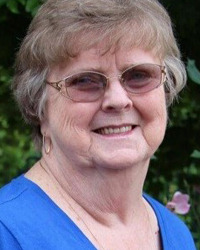
Gladys Wyatt Roberts, age 70, of Millers Creek, passed away Friday, February 28, 2020 at Wake Forest Baptist Medical Center in Winston Salem. Mrs. Roberts was born July 13, 1949 in Wilkes County to Rev. Archie and Julie Cleary Wyatt. Gladys was a member of New Light Baptist Church #2. She was preceded in death by her parents; her husband, Bud Roberts; great grandchild, Gauge Bumgarner; and sister, Clara Hart.
Surviving are her son, Allen Roberts and spouse Becky, Millers Creek; daughter, Pat Roberts and fiancé James Hart of Millers Creek; grandchildren, Julia Medford and spouse Michael of North Wilkesboro, Jason Bumgarner and spouse Celeita, Halie Smith all of Millers Creek; great grandchildren, Jayden Bumgarner and Kason Bumgarner both of Millers Creek; several aunts, cousins, nieces and nephews.
Funeral service were held 2:00 p.m. Tuesday, March 3, 2020 at New Light Baptist Church #2 with Pastor Jim Belcher and Rev. Mike Church officiating. Burial followed in the Ambrose Roberts Cemetery on Mertie Road. The family received friends at New Light Baptist Church #2 from 1:00 until 2:00 on Tuesday, prior to the service. Miller Funeral Service is in charge of the arrangements. Online condolences may be made to www.millerfuneralservice.com
Mikey James Lovette, 37

Mikey James Lovette, age 37, of Wilkesboro, passed away Wednesday, February 25, 2020 at his home. Mikey was born August 14, 1982 in Wilkes County to Janet Vivian Johnson Lovette. He was preceded in death by his grandparents, Cecil and Marie Lovette and Lawrence Johnson.
Surviving are his mother, Janet Johnson Gregory of North Wilkesboro; sister, Malisa Lovette and fiancé, Oliver Bentley of Wilkesboro; aunt, Sandra McCrary and spouse Randy, Smithfield, Virginia; nephews, Tyler Carter, Trace Bentley, Bradley Vorsteg, Elijah Bentley, and niece, Jaycee Carter.
A Celebration of Life was held 2:00 p.m. Sunday, March 1,, 2020 at Miller Funeral Service. Miller Funeral Service is in charge of the arrangements. Online condolences may be made to www.millerfuneralservice.com
Carlie Elvin Cleary, age 87
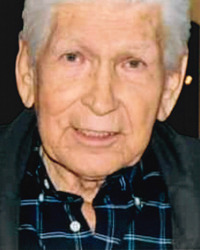
Carlie Elvin Cleary, age 87, of North Wilkesboro, passed away Tuesday, February 25, 2020 at his home.
Carlie was born December 7, 1932 in Wilkes County to Raymond and Mozelle Ballard Cleary. He was a member of Second Baptist Church, a US Navy Veteran; was a Mason and a Shriner. Mr. Cleary was preceded in death by his parents; sons, Scott Bryan Cleary, Mark Elvin Cleary; sister, Bernice Cleary; brother, Arbury Cleary; and a step-daughter, Paula Sebastian.
He is survived by his wife, Betty Porter Cleary; step son, David M. Wyatt and spouse Sandy of Millers Creek; step daughters, Tamara Wyatt of Wilkesboro, Nikole McGuire and spouse Chris of North Wilkesboro; brother, Larry Cleary of North Wilkesboro; sister, Barbara Jean Cooney and spouse Dan of Knoxville, Tennessee; eight step grandchildren; seven step great grandchildren; several nieces and nephews; special little friends, Katie Owens and Bubba Prevette.
Graveside service with military honors by Veterans of Foreign Wars Honor Guard Post 1142 and Masonic Rites were held 1:00 p.m. Thursday, February 27, 2020 at Mountlawn Memorial Park with Rev. Danny Dillard officiating. Memorials may be made to St. Jude Children’s Research Hospital, 501 St. Jude Place, Memphis, Tennessee 38105 or to a charity of the donor’s choice. Miller Funeral Service was in charge of the arrangements.
Donald Ray Ferguson, 73
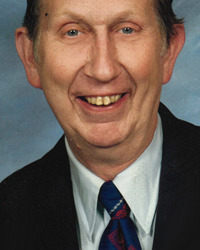
Mr. Donald Ray Ferguson, age 73 of Millers Creek passed away Sunday, March 1, 2020 at Wilkes Health and Rehabilitation.
Graveside service were held 2:00 PM Tuesday, March 3, 2020 at Shady Grove Baptist Church Cemetery in Wilkesboro with Rev Gwyn Anderson officiating. The family received friends from 12:30 until 1:30 PM prior to the service at Reins-Sturdivant Funeral Home.
Mr. Ferguson was born May 18,1946 in Wilkes County to Everette and Ruby Nichols Ferguson.
He was preceded in death by his parents and two brothers, Fred and Robert Ferguson.
He is survived by a sister, Betty Jean Ferguson Price and husband, Sydney of North Wilkesboro, a brother, Bill Ferguson of North Wilkesboro, a sister in-law, Helen Ferguson, of Millers Creek, and special friends, Wanda and Danny Byers of Millers Creek.
Online condolences may be made at www.reinssturdivant.com
Mr. Gary Dale Colbert

Mr. Gary Dale Colbert age 55, of North Wilkesboro passed away February 25, 2020 at Forsyth Medical Center.
Funeral services were held at Reins Sturdivant Chapel Sunday, March 1, 2020 at 2:00 PM with Reverend Danny Bauguess officiating. The family received friends from 12:00 until 1:45 prior to the service. Burial was in Mountlawn Memorial Park.
Mr. Colbert was born January 1, 1965 to Fred Ray Colbert and Blanche Durham Colbert. He was self-employed as a Little Debbie Distributor.
Mr. Colbert was preceded in death by his parents and a brother, Bruce Colbert.
He is survived by a son, Cory Garrett Colbert of the home, Gary’s fiancé, Samantha Hamby of the home, a sister, Cindy Colbert of Elkin, a brother Bobby Colbert and wife Kathy of Traphill. Beloved father figure to nieces Jenna Lyons, Gracie Colbert, nephew Traeson Colbert and Sammi Jo Walker, and also survived by niece, Kathy Jo McGee and nephew, Matthew Colbert.
Flowers will be accepted or memorials may be made to Leukemia Society of America 5950 Fairview Road, Suite 250 Charlotte, NC 28210.
Online condolences may be made at www.reinssturdivant.com
Wilhelmenia Wilby Greene Harris, 90
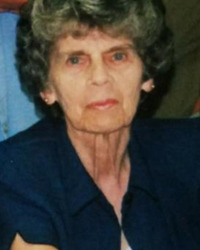
Mrs. Wilhelmenia Wilby Greene Harris, 90, of Millers Creek, passed away on Friday, February 28, 2020 at Maple Leaf Health Care in Statesville.
Wilhelmenia was born on June 25, 1929 in Watauga County to Willie Lawrence Greene and Flora Belle Greene.
Wilhelmenia was a homemaker and life long member of Stony Fork Baptist Church.
Wilhelmenia is preceded in death by her parents; husband, Samuel LeRoy Harris; daughter, Cathy “Vicky” Harris; brothers, Claude Greene, Cecil Greene; sisters, Wilma Latham, Lorena Greene, Linda Kay Watson.
Wilhelmenia is survived by her sons, Robert Alan Harris (Kelly Church) of Wilkesboro, Barry Harris (Rebecca) of Statesville; sister, Louella Copley of Charlotte; two grandchildren, Madison Harris of Statesville, McKenzie Harris of Millers Creek; two great grandchildren, Tanner and Shania of Statesville and many nieces and nephews.
Visitation was held Sunday, March 1, 2020 from 2:00-2:45 at Stony Fork Baptist Church. The funeral service was held on Sunday, March 1, 2020 at 3 p.m. at Stony Fork Baptist Church. Burial followed in the church cemetery.
Rev. Sherrill Welborn and Rev. Phillip Woodring officiated.
Memorial donations may be given to Stony Fork Baptist Church Cemetery Fund P.O. Box 128 Deep Gap, NC 28618.
Condolences may be sent to: www.adamsfunerals.com
Adams Funeral Home of Wilkes has the honor of serving the Harris Family.
Arvie Lou Hayes Hamby, 89

Mrs. Arvie Lou Hayes Hamby, age 89 of North Wilkesboro, passed away Thursday, February 27, 2020 at Wake Forest Baptist Health-Wilkes Medical Center.
Funeral services were held 2:00 PM, Saturday, February 29, 2020 at Reins Sturdivant Funeral Home Chapel with Rev. Sherrill Wellborn and Rev. Dr. Susan Pillsbury officiating. Burial was in Arbor Grove United Methodist Church Cemetery. The family received friends from 12:00 until 1:30 prior to the service at Reins Sturdivant Funeral Home.
Mrs. Hamby was born February 22, 1931 in Wilkes County to Washington Mumford Hayes and Essie Viola Holcomb Hayes. She was a member of Arbor Grove United Methodist Church. She was a former President of the Handicap Organization of Wilkes.
Mrs. Hamby was preceded in death by her parents, her husband; Max Aldean Hamby, a sister; Marybelle Hayes Johnson, a brother; William Jasper Hayes and two brother in laws; Walter George and Lester Johnson.
She is survived by four sons; Niki A Hamby and wife Kim of North Wilkesboro, Kimi M. Hamby and wife Kathy of Boomer, W. Kipi Hamby and wife Melissa of North Wilkesboro and Kini H. Hamby and wife Kimberly of North Wilkesboro, four grandchildren; Trevor Hamby, Kailee Davis and husband Tim, Jordan Cheek and husband Thomas and Ethan Hamby and Brenna, two great grandchildren; Sidney Cheek and Emersyn Davis, two sisters; Dicie Hayes George of Sparta, Dorothy “Dot” Hayes Foster and husband Curtis Foster of Purlear and special friends of the family; Perry and Claudia Parks.
Memorials may be made to Arbor Grove United Methodist Church Cemetery c/o Esther Eller 480 Shepherd River Road, Millers Creek, NC 28651 or Mtn. Valley Hospice 401 Technology Lane Suiter 200 Mt. Airy, NC 27030.
Online condolences may be made at www.reinssturdivant.com
Virginia Fay Handy Watson, 65
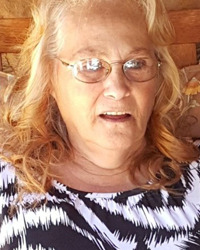
Mrs. Virginia Fay Handy Watson, age 65 of Sparta passed away Monday, February 24, 2020 at Hugh Chatham Memorial Hospital, Elkin NC.
Funeral services were held at 1:00 PM Friday, February 28, 2020 at Traphill Baptist Church with Pastor Mike Caldwell officiating. The family received friends from 6:00 until 8:00 PM on Thursday, February 27, 2020 at Reins Sturdivant Funeral Home. Burial was in White Rock UMC Cemetery on Haystack Rd.
Mrs. Watson was born December 2, 1954 in Wilkes County to Mack Charlie Handy and Merle Blevins Handy. She started at Chatham’s in 1994 and worked there until 2016. She retired after 22 years. She loved her grandchildren, was an avid church goer, made a mean gravy and biscuit, liked canning, cooking, and planning family get togethers.
In addition her parents, he was preceded in death by her husband; Tony Clinard Watson; one sister Ester Mae Handy and three brothers Charlie, Billy, and Bobby Handy.
She is survived by her daughter; Lisa McCann of Ronda and boyfriend Gary Perdue, and two sons, Tony Dale Watson and girlfriend Jessica Venable of Ennice, NC; Larry Watson and wife Jessica Watson of State Road; four sisters, Patsy Lail, Rita Anderson.Tina Lambert, and Angie Holder; two brothers, James Handy and Chris Mcharque Thirteen grandchildren and six great grandchildren, and a special friend, Jimmy Billings.
Flowers will be accepted, or memorials may be made to the Donor’s choice.
Online condolences may be made at www.reinssturdivant.com
James Jackson “Jack” Brown, Jr., 63

James Jackson “Jack” Brown, Jr., age 63, of Hays, passed away Sunday, February 23, 2020 at his home. Jack was born January 30, 1957 in Wilkes County to James Jackson “Jim” Brown, Sr. and Sally Brewer Brown. He was preceded in death by his parents.
He is survived by his daughter, Carrie Beasey of Hays; grandson, Tyler Beasey of Hays; sister, Jennifer Fuller and spouse Ralph of Hays; nephew, Clinton Fuller and spouse Brandy of Hays; niece, Christina Call of Wilkesboro; two great nieces; great nephew, Nathan Call of Wilkesboro.
Memorial service was held 10:00 a.m. Saturday, February 29, 2020 at Miller Funeral Chapel. Miller Funeral Service is in charge of the arrangements. Online condolences may be made to www.millerfuneralservice.com
Dare Foster Moore, age 89

Dare Foster Moore, age 89, of Wilkesboro, passed away Monday, February 24, 2020 at Wake Forest Baptist Health-Wilkes Regional. She was born September 3, 1930 in Wilkes County to Alonzo and Nora Riggs McNeil. Mrs. Moore was a member of Mount Pleasant Baptist Church. She loved cooking, music, dancing, fashion and decorating. She was preceded in death by her parents; her husband, Bobby Ray Moore; son, Michael Foster; daughter, Susan Faye Foster; four brothers; and four sisters.
Mrs. Moore is survived by her children, Cathryn Aldridge of Columbia, South Carolina, Debbie Foster, Tim Foster and spouse Melanie all of Wilkesboro, Jodi Foster of Asheville, Sandi Foster of Wilkesboro; six grandchildren; six great grandchildren; several nieces and nephews.
Funeral service was held 2:00 p.m. Saturday, February 29, 2020 at Mount Pleasant Baptist Church with Pastor Kevin Brown officiating. Burial followed in the Church Cemetery. The family received friends at Mount Pleasant Baptist Church from 1:00 until 2:00 on Saturday, prior to the service. Memorials may be made to Mountain Valley Hospice, 688 North Bridge Street, Elkin, NC 28621. Miller Funeral Service is in charge of the arrangements. Online condolences may be made to www.millerfuneralservice.com
Bina Louise Myers, 82
Bina Louise Myers, age 82, of Hays, went home to be with Jesus, Tuesday, February 25, 2020 at her home. Mrs. Myers was born March 12, 1937 in Watauga County to Edward and Lona Belle Tedder Brewer. She was a member of Rose of Sharon Baptist Church and was a prayer warrior. Bina loved gardening. She was preceded in death by her parents; brothers, James Brewer, Dean Brewer, sisters, Ella Mae Huggins and Jean Ring; son-in-law, Craig Gambill.
Surviving are her husband, Bill Myers of the home; daughter, Pat Gambill of Hays; sons, Billy Myers and spouse Susan of Millers Creek, Charles Myers and spouse Rachel of Hays; grandchildren, Jamie Gambill of Hays, Anthony Myers and spouse Ashley of Winston Salem, Will Myers of Millers Creek, Acacia Myers of Thomasville, Steven Myers of Hays; great granddaughter, Grace Gambill of Hays.
Funeral service were held 12:00 p.m. Friday, February 28, 2020 at Rose of Sharon Baptist Church with Rev. Steven Shumate and Rev. Travis Brown officiating. Burial followed in the church cemetery. The family received friends at Rose of Sharon Baptist Church from 11:00 until 12:00 on Friday, prior to the service. Flowers will be accepted or memorials may be made to St. Jude Children’s Research Hospital, 501 St. Jude Place, Memphis, Tennessee 38105. Miller Funeral Service is in charge of the arrangements. Online condolences may be made to www.millerfuneralservice.com
Pallbearers will be Anthony Myers, Will Myers, Steven Myers, Allen Holbrook, Jim Wood and Bill Gryder.
Clyde Grady Nickelson, age 83
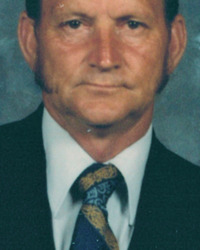
Clyde Grady Nickelson, age 83, of Millers Creek, passed away Monday, February 24, 2020 at his home. Clyde was born July 12, 1936 in Ashe County to Robnit and Grace Barker Nickelson. He was a member of Chestnut Grove Baptist Church. He loved to garden, loved his plants and trees, and being outdoors. Clyde worked for Lowe’s Co. as a truck driver and 33 years for Skyline Marina as manager. Mr. Nickelson was preceded in death by his parents; and brother, Jim Stone.
Surviving are his wife, Dorothy Johnson Nickelson; sons, Clyde Nickelson, Jr. of Ronda, Michael Shane Nickelson of Purlear; daughters, Phyllis Keen of Layton, Utah, Roberta Hadley of Las Vegas, Nevada, Sheree Smith of Victory, Texas; brother, Duane Stone of Millers Creek; nine grandchildren; seven great grandchildren; several nieces and nephews.
Funeral service were held 1:00 p.m. Wednesday, February 26, 2020 at Miller Funeral Chapel with Rev. Sherrill Wellborn and Randy Gambill officiating. Burial followed in Mountlawn Memorial Park. The family received friends at Miller Funeral Service from 12:00 until 1:00 on Wednesday, prior to the service. Flowers will be accepted or memorials may be made to Ebenezer Christian Children’s Home, PO Box 2777, North Wilkesboro, NC 28659. Miller Funeral Service is in charge of the arrangements. Online condolences may be made to www.millerfuneralservice.com
Kaye C. Reid, age 81

Kaye C. Reid, age 81, of Purlear, went home to be with her Lord, Sunday, February 23, 2020 at her home. Kaye was born May 18, 1938 in Wilkes County to E.M. and Iola Church Campbell. Mrs. Reid was a member of Rock Creek Church of Christ. She was preceded in death by her parents; her husband, Billy Wayne Reid; brother, Bobby Campbell; and sister, Virgie Campbell.
Kaye is survived by her son, Guy Wayne Reid and spouse Lonnitta of Millers Creek; grandson, David Wayne Reid and spouse Jamie of Cary; granddaughter, Ricquell Cooper of Charlotte; great grandson, Gavin Wayne Reid of Cary; brother, James Campbell and spouse Judy of Wilkesboro; sister, Jane Bouchelle and spouse Jim of North Wilkesboro; a number of nieces and nephews.
Funeral service were held 2:00 p.m. Thursday, February 27, 2020 at Rock Creek Church of Christ with Pastor Michael Howard officiating. Private burial was in the church cemetery. Memorials may be made to Rock Creek Church of Christ Church, c/o Chuck Wallis, 748 Campbell Road, North Wilkesboro, NC 28659 or to Samaritan Kitchen of Wilkes, PO Box 1072 Wilkesboro, NC 28697. Miller Funeral Service is in charge of the arrangements. Online condolences may be made to www.millerfuneralservice.com
2 notes
·
View notes
Photo
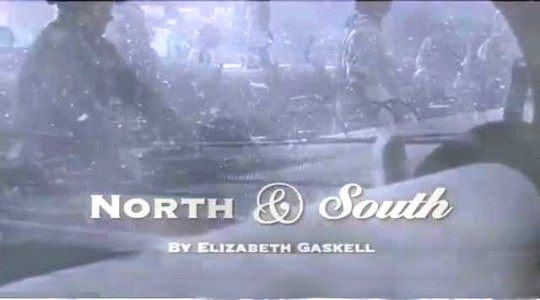
North & South - BBC One - November 14, 2004 - December 5, 2004
Period Drama (4 episodes)
Running Time: 60 minutes
Stars:
Daniela Denby-Ashe as Margaret Hale
Richard Armitage as John Thornton
Tim Pigott-Smith as Mr Richard Hale
Lesley Manville as Mrs Maria Hale
Sinéad Cusack as Mrs Hannah Thornton
Jo Joyner as Fanny Thornton
Brendan Coyle as Mr Nicholas Higgins
Anna Maxwell Martin as Bessy Higgins
Kay Lyon as Mary Higgins
Pauline Quirke as Dixon
Rupert Evans as Frederick Hale
Brian Protheroe as Mr. Bell
John Light as Henry Lennox
Emma Ferguson as Edith Shaw Lennox
Jane Booker as Aunt Shaw
Will Houston as John Boucher
10 notes
·
View notes
Text

Bessie Stringfield (March 5, 1911 – February 16, 1993) became the first African American woman to ride her motorcycle across the US solo. Her feat was credited with breaking down barriers for both women and African-American motorcyclists.
Born in Kingston, Jamaica, she was the daughter of Maria Ellis, a domestic servant, and James Ferguson, her employer. They migrated to Boston but both died of smallpox. Orphaned when she was five years old, she was adopted by a wealthy Irish woman who raised her as a Catholic. On her sixteenth birthday, her mother gave her a motorcycle, “even though good girls didn’t ride motorcycles.”
She climbed aboard her first bike, an Indian Scout. She started the motorcycle and easily mastered it. She made eight long-distance solo rides across the US. She earned money from performing motorcycle stunts in carnival shows. She was often denied accommodations while traveling and was forced to sleep on her motorcycle at gasoline stations.
During WWII, she worked for the Army as a civilian motorcycle dispatch rider, carrying documents between domestic bases on her Harley-Davidson bike. The only woman in her unit, she completed rigorous training maneuvers including learning how to weave a makeshift bridge from rope and tree limbs to cross swamps. She encountered racial prejudice while on the road.
She wed and divorced six times. She and her first husband were deeply saddened by the loss of three babies, she had no more children.
When the American Motorcycle Association opened the first Motorcycle Heritage Museum in Pickerington, Ohio, she was featured in its inaugural exhibit on Women in Motorcycling. The AMA instituted the Bessie Stringfield Award to honor women who are leaders in motorcycling. She was inducted into the Motorcycle Hall of Fame. #africanhistory365 #africanexcellence #womenhistorymonth
0 notes
Text
No Ordinary Time: Part Two “wherever you are tonight”

"...A time when the United States is what we fight for..."
The occupants of the Grisham Hall boarding house were no strangers to the war effort. Brothers, cousins, old flames, and current sweethearts have been wrenched from their grasp, the only contact to their stolen loved ones is military-grade pencils and scraps of paper.
Estelle prides herself on her mind for numbers but a usurper from her past rears his russet head and threatens to steal her thoughts every chance he gets. Bessie has been searching for a home in every patron in that cafe but she's left seeing his face everywhere she looks. Constance hears her lover's voice on the wind, finding quiet in the graveyard shift of the machine shop. Margaret refuses to admit defeat but the distance between her letters and her love grows wider each day. Jeannette has read many stories about tragic heroes. Her childhood friend has told tales of his plans for wealth and ending the war on his own. She just hopes she has a chance to do her part first.
wherever you are tonight
Taglist: @rinadoesstuff @vintagelavenderskies @julianneday1701 @wexhappyxfew @trashgoddess600 @pilindieltheelf @sunnyshifty @rogue-sunday @thoughpoppiesblow @pxpeyewynn @50svibes
Norfolk, VA. 4th of April, 1944.
While some found the adjustment to loved ones being taken from their grasp rocky, Elizabeth Ferguson had the advantage that only a select few possessed. She had already lived through it, making the sting nothing but a fond memory. It didn’t stop stinging though, no matter how many times one felt it. A dull ache would be a more appropriate term, the bruised flesh tender, and the black discoloration fading but the strain of muscles didn’t let the memory fade entirely. It was enough to make a first-timer bedridden for a week but to a repeat offender like Elizabeth, it was a mild discomfort. She had said goodbye before and did her best not to, when given the chance.
She held onto forlorn books, ragged quilts, and threadbare shirts to keep the end at bay, trying to prevent the inevitable ache. Elizabeth tried her best to limp about when the goodbyes were unavoidable. That could be said of everything she attempted. Bessie was a trier, an all-around trier and failer. She didn’t have a wall of degrees like Estelle or a self-assured flick to her head like Vera. She was just Bessie Ferguson, who had clattered and crashed her way through twenty-one years of life. Not that she hadn’t attempted school (she wasn’t the best student) and not that she hadn’t attempted to walk with the confidence that her theatrical friend possessed (it ended in a twisted ankle and a scraped-up knee) but by god, she tried.
She liked to think that her determination was her best attribute, right up there with the dimple on her left cheek that had gotten her more than her fair share of tips when she had been employed at Charlie’s. The real Charlie had said she was one of his best workers and his gruff voice in her head still brought a smile to her lips, bringing out the money-winning dimple.
Even when goodbyes were said, Bess found ways to hold onto the people or things. She still frequented her old place of work long after she was employed in the noble service of her country. Every Friday, like clockwork, she was in the second to last booth, the red vinyl striking against the blue of her uniform.
I look like the American flag, Bess thought, examining herself in the reflection on the glass of the window. Red booths, white mugs, and a blue uniform. How was that for patriotic?
She looked different, hair sleek and uniform pressed. Was this really Bessie Ferguson who knew every waitress and cook’s name in Charlie’s Diner? Or was Bessie older now, with the WAVES blue wool on her shoulder, finer and warmer than anything she had owned in her twenty-one years. 1941 seemed like a century ago, not three years.
“Hiya, Bess,” Angie was still there, her bouffant of pin curls still perched precariously on her brow. “You got a letter from your boy, I see,”
Bess came in every Friday, with a new letter or to write her own. The grease-stained walls had brought her luck and good memories. She thought that she could imbue them into the stationary, sending them across the ocean to him.
“Yup,” Bessie said, smiling.
“About damn time,”
She had been sat without a letter for some two weeks now. The patrons and the staff of Charlie’s had been concerned, fretting more than Bessie had herself.
“He was a dear thing, that Powers boy,” Angie said, tucking her pad back into the apron Bess was all too familiar with. There was no need to take her order, Bess ordered the same thing every time. “Two sugars, right?”
No matter how tenderly she tried, the bruise was liable to be bumped or brushed. She tried not to wince at the words.
“I saved you a seat,” He would say, even though she was working. He knew full well she shouldn’t sit during her shift but he would say it anyway and she could never say no, either. His smile had seared itself into her mind, a soft glow that warmed her better than any cup of coffee ever did. He would pour her a cup anyway, from the pot she had brought to refill his own mug. “Two sugars, right?”
That had been before rationing. That had been before the war had been set to boil when it was brewing like the dark roast that soaked every inch of this diner. It had been percolating, slowly dripping and staining their country. He had been a machinist at the shipyard’s graveyard shift and she had been a waitress at his favorite diner, that served coffee with “the prettiest smile I ever saw”. It had been a romance sweeter than any baked good in the case and more poetic than Jeannette’s Shakespeare.
She had been a different person then, just a little girl in her third house in three years. Bessie hadn’t known Mrs. Grisham’s motherly touch or the soft smile of her beau. Bessie had only known how to try and try she did.
the ‘30s hadn’t treated Bessie’s family well but she knew they weren’t special in that aspect. The world had been gripped by the choking thorns of financial strain and the vines had pulled the last strains of life out of her parents. When her father had died, Bessie had thought things would be okay. The farm she had grown up on and the family she had been surrounded with was invincible, or so she had thought. She would grow up under the bows of that oak tree that towered in the yard, swatting the swarms of yellow flies and raking up the leaves in the fall. It was her home.
But Bessie watched her family home disappear from view in the backseat of a second cousin’s car, eight years old and she had never seen her new home before. Her oldest brother, Arthur, was sent some twenty miles to the west, only twelve, to provide labor to yet another distant relative’s floundering farm. Eight years old and Bessie would never see home again.
Elizabeth Ferguson hadn’t been raised to admit defeat. As the Depression stretched on and her bags were packed and unpacked, Bessie kept trying. She made her peace with every attempt, trying hard to be useful, helpful, and liked. Her name provided a blank slate, quickly covered in her current caretaker’s preferred nickname. Elizabeth. Beth. Bess. Bessie. Lizzie. Liz. Eliza. She answered to them all and she didn’t mind, truly she didn’t. She would try her best to be what that family wanted, what that home demanded but she’d end up with the suitcase in her hand and a new route to a new home.
Elizabeth had parted ways with the last relative, the last attempt at home, at the age of eighteen. April had dawned cold that year, 1941. She had found employment with the sticky floors and chrome edgings of Charlie’s, turning up on the Grisham’s doorstep. It had been Carrie, Vera, and Estelle back then. Before the war.
Before the war. She worked hard, shoes wearing thin and bones aching when her head hit the pillows. Elizabeth had worked hard and tried to cling to what she had left, the friends she had gained, and the home she had made. Maybe if she clung to them, the one god thing wouldn’t slide away from her, finding a home in some other harbor.
She hadn’t been looking for him or anyone and yet, they had found each other. Drawn towards each other, blending and blurring in watercolor of perfection. Maybe the best pieces of art were the ones that weren’t intended.
“Has anyone seen to you two?” She had asked, whirling around on the slick tiled floor. They were a grease-stained pair, smelling of oil and sleepless nights like every machinist who crossed the line from Portsmouth for a cup of coffee after work.
“No, ma’am,” The tallest, a thin, rake of a boy who didn’t seem much older than Bessie said. His voice was soft, not loud and course like the usual Shipyard folk. “We are fine to sit for a spell-”
“Nonsense,” Elizabeth shifted the bus bucket of dirty dishes to her hip, bracing it with her arm so she could retrieve the pad and pen from her pocket. “What can I get you two?”
“Ma’am, do you need a hand?” The soft-spoken one made to reach for the bucket but Bessie raised a hand to stop him.
“It’s not heavy. I’m stronger than I look.” She smiled. “Now what can I get you two?”
Faces came and went in that little diner on the corner of College and Duke, there were the regulars and there were the strangers. Elizabeth had treated them all the same, a bright smile and a warm plate. It was the least she could do and she knew what it was to need a smile from a stranger or two. These two machinists weren’t the only blue collars who sat in the vinyl booths but she fought to keep her eyes on the paper and not straying towards the one who offered her help. The orders were taken and the niceties exchanged, Bess turned on her heel, biting her lip to keep from grinning.
As she marched towards the kitchen, his companion jabbed and teased, the blush creeping up the soft-spoken boy’s face, settling into his hairline. She
These two machinists quickly became regulars, coming back every Friday. Small talk was made and a rough sketch of their characters was established. Elizabeth had never been one to chase but it seemed the work was being done for her. Mr. Wynn and Mr. Powers returned week after week. As the months dragged by and April came and went, Mr. Powers would linger.
“Where are you from, Mr. Powers?”
“Clincho, ma’am,”
“I’ve got family out that way,” Elizabeth had said. “How long you been in the area?”
“I’ve been in Portsmouth for about a year now, I reckon,”
“I’ve an aunt in Portsmouth. Over on Bains Creek,”
“Where don’t you have family, ma’am?’
“The moon,”
He had smiled, bright and warm. Elizabeth felt like she had taken a warm cup of coffee and held it tight to her chest, fingers warming on the ceramic. The dimple on her left cheek appeared in response.
“It’s Elizabeth,” She said. “Elizabeth Ferguson.”
“Darrell Powers,”
Elizabeth had never thought that sharing a smile could be something so special. She had smiled at hundreds of patrons, offering a grin here and there until the muscles in her face hurt, all for a few extra quarters thrown on the table. Elizabeth had never expected a tip from Mr. Powers, or Shifty, as he said the boys called him. Mr. Powers, he remained to her, even on their tentative agreement to a show at the cinema on some Friday night. Mr. Powers, he would be, until he walked her home from her shift, offering her his jacket in the rainstorm that sent them racing towards the nearest porch. There, standing on a stranger’s porch, in the April rainshower, Elizabeth wrapped his jacket tighter around her disheveled uniform, breathing in the smell of cigarette smoke and oil. There, the rain beating down around them and his hair slick against his blushing face, he asked her if he could call her Elizabeth.
“Liz, Bess, I don’t care,” She said.
“Which do you like better, ma’am?”
“My brother used to call me Lizzie,” She admitted.
His eyes studied her like she was some fine painting he had spent hours perfecting and the name on his lips was the signature at the bottom, declaring the work as his. The colors could run and the ink would fade but Elizabeth Ferguson would cling to that coat in its smokey comfort. She had worn it as the rain had lightened up enough to begin their route to the Grisham front door. She wore it on the front porch and burrowed her hot face into the leather as Vera pounced on her, pounding her with questions and squeals.
Elizabeth Ferguson knew what it was to lose thing but Lizzie was willing to try and hold onto this boy as tight as she could. Lizzie was going to try her damn near hardest. This boy with his soft words and bright smile would be taken from her kicking and screaming. She allowed herself to be lulled into a sense of security, taking the two sugars in her coffee and his offered hand too. Lizzie was all bright paints and newly sharpened pencils and Shifty Powers was all steady hands and fresh paper, the perfect medium for this new home Lizzie dared dream of. She was ready to start something new, something untouched by the inevitable goodbyes.
Then the bubbling brew of Europe had overflowed into the spitting flames. Steam rose and Pear Harbor shattered like a ceramic mug on hard tiled floors. Vera left, caught up in the theatrics of secrets and intelligence and Carrie joined up, bringing her soft words and soothing hands to the wounded. Estelle left her school and allowed her talented mind to be lent to the Navy, putting together pieces of puzzles and breaking codes like they were the Sunday crossword. Lizzie wasn’t brave or smart or soft like her friends. Elizabeth Ferguson was a stumbling, bumbling trier and she grasped for the remaining pieces of that home she had searched for. She had spent years searching for family in the faces of strangers, reaching for that oak tree and rope swing in houses that would never be her home and she wasn’t about to lose it. Not to war, not to an Army, and most definitely not now.
“Don’t worry about me,” he had said, gripping her hands in his own calloused ones. He had volunteered, given himself up willingly. Lizzie could have screamed. The Airborne had terrified her, the planes and the silk chutes were terrifying. Their kiss on the Grisham Hall’s front porch had tasted like possibility and tears. He left for Georgia that morning, leaving her in Norfolk with only a pen and an empty hand.
She had told him she wouldn’t if he promised not to worry about her. She had tried not to be worried but maybe he had every reason to be worried about her.
“Bess?” Angie said again, snapping her fingers. “You good, sugar?”
“Yes, sorry,” Elizabeth said, smiling sheepishly. This diner could pull her back when she didn’t have a thought for the present.
Angie shook her head. “Baby, I think they are working you too hard over there,”
“There” was the mailroom on base. “They” were the WAVES, summoning Bess to their cause. She had joined up in April of ‘43. He had been gone for a week and Bess couldn’t stare at the booth where he had once sat for hours. She didn’t mind the work, and she told Angie so. Being surrounded by all those letters and being the reason soldiers and families heard from their loved ones was the only thing that kept Elizabeth sane. She could try and offer some peace to the fellow fretting wives and friends who longed for a letter, a word, or even a telegram that told them that he was safe.
Angie wandered back to the counter, Elizabeth’s order safely scribbled in the confines of her mind, leaving her with her thoughts and her pen. Staring at the traffic that passed outside the window, her fingers gripped the pen, sketching out the twist of his head and the twinkle of his eyes as she remembered it. As his face burned into her mind.
She didn’t draw him as often as she wanted to. Elizabeth’s sketchpads were filled with the same sketches over and over, page after page, burned into her memory. She didn’t have to look at a reference anymore, the oak trees and the slopes of the house never changed. The smiling faces and the bright eyes as she remembered them didn’t shift. Every so often, a new face would grace the pages but that wasn’t a usual occurrence and was a great honor when a stranger or new face caught her attention. Flipping through the sketchpad, Elizabeth saw his face etched into the pages. She only put pen to paper and chronicled his features on the days she missed him the most. He haunted her more than she drew, hours spent with her finger on the desk tracing out his smile.
“They said you’d be here,” Jeannette Edwards stumbled through the door, arms full of books as she slid into the seat across from Bess. In the few weeks that Jeannette had lived in Grisham Hall, she had slowly acclimated herself to the Norfolk streets.
“Jeannie,” Bess smiled, closing her sketchpad. “Estelle still working?”
Jeannette nodded. “She said to meet you here and that we’d take the bus home.”
Bess folded her letter, sliding her belongings to the side so that Angie could place her order on the sticky tabletop. The mug of coffee, two sugars carefully rationed and dissolved, and the apple pie. Offering Jeannette the fork, she encouraged her to take a bite. Bess was passionate about oil pastels and pastries, making it her mission in life to share those passions with her friends. When a pie or a drawing was offered, Bess’s trust soon followed.
“Why do you rank pie, if you don’t mind me asking?” Jeannette asked, using the side of the fork to cut a piece off of the wedge of glistening golden pie.
“Every home is the same but the apple pie is different everywhere you go.” Bess explained.“Mrs. G’s is third best, this is the second-best apple pie.”
“Who is the first place?”
“Mine,” Bess smiled.
“You are multi-talented then,” Jeannette said around the mouthful of second-best pie, dipping her head towards the sketchbook she had abandoned.
“I just doodled,” Bess shook her head but she offered the book to Jeannette all the same. Watching her thumb through the pages, Bess’s heart was wedged firmly in her throat, not daring to hope for any kind words or critique.
“These are beautiful,” Jeannette said, her fingers tracing the lines that intricate leaves that had first taken hours and now took a matter of minutes. “Where is it?”
“That’s my family’s farm.”
“You must visit often to sketch it so much,” Jeannette said.
Bess smiled, taking the sketchpad back and tucking it into her bag. Reaching for the cup of coffee, she stared into its dark depths. Maybe Jeannette knew the words to describe how she felt. Jeannette was better at words than Elizabeth.
“It’s hard to forget,” She admitted.
A knock on the window beside their booth made both women jump, the fork clattering on the shared pie plate. Estelle’s face pressed against the window as she beckoned them out, her lipstick faded after the long day hunched over the papers and codes. Estelle Tran was rarely seen with a hair out of place, much less with her signature red lipstick anything but striking against her pale skin. Bess insisted she looked like a real version of Snow White, something that Estelle had always shake her head at. Disney’s princess hadn’t been college-educated, she reminded them.
Bess dropped the money on the table and gathered up her purse and hat, waving goodbye with her fistful of gloves to the cooks and the regulars who still knew her name.
“See you next Friday, Bess,” Angie called as the door swung shut behind them.
“How was work, Stell?” Elizabeth asked, looping her arm through her friend’s as she tugged the gloves over her graphite-smudged hands.
“Heinous,”
The disheveled appearance of the usually put-together Estelle was indication enough. Bessie nodded.
“Let’s go home,” she said.
It was, in moments such as this, when rest is most needed that the world decides to test you.
The bus pulled up to its spot, just as it always did. It was a route that Bess was familiar with, a routine that she welcomed. Fridays were spent at the diner until Estelle got off of work. They would then walk home or, if particularly exhausted, take the bus. Bessie hopped inside without hesitation, ready to sit in a seat and watch the world pass by while she finished the letter she had drafted in her mind. The bus driver, a new face, said nothing as she entered. But, on the days when rest is most needed, inconvenience is the Devil’s worst weapon.
“We don’t let your people on,” The bus driver said, the passengers peering over the edge of the nest, not daring to disagree.
“I beg your pardon?” Bess looked back, seeing that he was not referring to her in her American blue uniform but Estelle. Dear Estelle with her features nothing like the usual faces of Norfolk, Virginia.
Jeannette’s mouth hung wide and Estelle froze, foot perched on the step. Her face fell and Bessie could almost hear it shatter on the pavement. The Grisham girls had been informed that Estelle’s family hailed from the Indochina islands in the Pacific and had been in America since Teddy Roosevelt’s days. She was most ardently NOT the enemy. Mrs. Grisham would sniff indignantly at such a mention and Vera, before she had left, had been known to glower at anyone who dared say such a “fucking disgusting thing”.
Bessie stepped forward, ready to give the man the facts but a hand encircled her arm, pulling her out of the bus and back on the pavement before the doors swung open. Swearing so loudly and vehemently that Mrs. Grisham would have been sent to an early grave, Bessie aimed a kick at the tire of the bus before it sped off, sans three passengers.
“It’s fine,” Estelle said.
“You aren’t Japanese!” Elizabeth growled, her shoes stomping on the pavement. Bess was a trier and she was a fighter. She was ready to try fighting for Estelle, even if that meant throwing a fist at this burly bus driver.
“It’s fine, Bess,” Estelle said.
“That was a despicable thing to do,” Jeannette fumed.
“Let’s just go home,” Estelle muttered, squashing her hat more firmly over her brow and leading the way down the street.
What good was it, Bessie grumbled to herself as she followed Estelle, to serve your country when you were still considered the enemy?
Estelle worked harder than any man and she had been working hard for many years. She had been a teacher and now fiddled with codes that boggled even the male mind. And yet, she was only seen as the enemy. Estelle Tran, by seniority or by necessity, had taken the unofficial role of den mother among the women of Grisham Hall. On the third floor, nothing went on without Estelle knowing. She guarded the girls like they were her own, a grim mother hen who warded off broken hearts and bruised feelings with wise words and her own experience. Bessie loved Estelle like she was a sister and she would have gladly punched that bus driver if she wasn’t wearing the uniform of the US WAVES. Women’s work in the war was precarious enough as it was.
Elizabeth didn’t say a word, as she slipped her hand into Estelle’s, gripping it tightly as they marched through the streets of Norfolk, their heads held as high as they could manage. She knew she couldn’t fight to change every mind or man in this country but Bessie Ferguson was a trier, through and through. Home may not have looked like that oak tree or the face she had sketched so often but she’d hold onto it as long as she could.
#world war two women#grisham hall for ladies#estelle tran#Bessie Ferguson#bessie x shifty#jeannette edwards#no ordinary time#bessie backstory#flora skye writes#tildy writes#band of brothers fanfiction#hestias of the homefront
12 notes
·
View notes
Text
Queen B of Miami: The Sensational Bessie Stringfield
Since blasting into existence in the late nineteenth century, motorcycles have captured every eye they have crossed. Freedom, mystery, fun, and rebellion are all tags people often adhere to those who dare to ride these machines, but when one certain person tore through towns they also provoked feeling of shock and, unfortunately, anger. Despite this, they never stopped riding. Their name was Bessie Stringfield. She was a woman. She was black. And regardless of the dangers facing her in the 1930s, 40s, and 50s, she boldly rode for herself and her country declaring “What I did was fun, and I loved it.”

Bessie Stringfield image via MotorcycleMuseum.com.
Matching the mystique of her motorcycle is Bessie’s own life story. Although some accounts claim she was born in North Carolina, several other accounts and Bessie herself state that she was born on February 11th 1911 in Kingston, Jamaica to a Dutch domestic servant named Maria Ellis and her Jamaican employer James Ferguson. Before she was five years old Bessie found herself uprooted from home when her family relocated to Boston, but the more tragic shift was to come soon after their arrival. In one version of events, both her parents died from smallpox shortly after the move. In another, her mother died of the disease and her father, unable to cope with the loss, left young Bessie abandoned on a Boston street and vanished from her life. After living in an orphanage for a few years Bessie was finally adopted by a wealthy and devout Irish Catholic woman who took the girl into her family and treated her as an absolute equal. When her sixteenth birthday was on the horizon, Bessie had a very specific request, she had been trying out their neighbor’s motorcycle and she wanted one to call her very own. Her mother told her that nice girls didn’t go around riding motorcycles but when her birthday arrived Bessie’s wish was granted and her mother presented her with a 1928 Indian Scout motorcycle.

A young Bessie on her motorcycle. Image via MotorcycleMuseum.com.
Bessie had very little experience with motorcycles but once she began riding she proved to have a natural talent, one she attributed to her strong faith and “the man upstairs”, claiming she prayed to be able to ride and she woke up possessing the skills. Once she began riding Bessie was unstoppable and after graduating high school she took off on trips all over New England, but she wanted more. She began playing a game where she would toss a penny onto a map and traveling wherever it landed carrying only her leather jacket, a money belt, and extra clothes that could be rolled up into her bike’s saddlebags. In 1930 when Bessie was nineteen years old she completed her first solo cross country trip on her bike, the first ever by a black woman, and in the coming years she made seven more cross country trips and traveled through all lower forty-eight states. In order to finance her excursions she turned to her talents and began performing riding stunts in carnivals along the way including the infamous Wall of Death, a stunt that involved a large round cage where she would ride around the inside with enough speed to be suspended sideways on the walls.

Bessie Stringfield image via MotorcycleMuseum.com.
It might sound like a dream, riding around the country on your motorcycle, performing in carnivals, and answering to no one. But the horrible fact was that every time Bessie Stringfield rode on any of the twenty-seven Harley Davidson motorcycles that she owned throughout her life she was putting herself at risk. In the 1930s and 40s many parts of the country were deeply segregated and did not look kindly at any black woman, let alone one who rode a motorcycle and did exactly as she pleased. She used The Negro Motorist Green Book to find safe places to sleep across the country and when no one gave her a bed she slept on her motorcycle in the parking lots of gas stations using her jacket as a pillow and propping her feet up on the seat. In one horrific incident Stringfield was traveling through the deep south and in Georgia she was confronted by the Ku Klux Klan but she literally left them in the dust, jumping on her bike and riding away faster than any of them could follow. She was very aware of how dangerous her riding was but she did not worry, always saying that her faith made her believe she would always be safe and taken care of.
During a ride In the 1940s Stringfield stopped inside a movie theater to rest and she saw a newsreel about women helping in the war effort. Inspired by the reel, Stringfield went on to enlist as the only woman in a black motorcycle dispatch unit of the United States army. It was not as simple as just signing up, in order to join the unit she had to pass a battery of tests including riding up sandy hills and being able to weave a bridge made of rope and tree limbs by hand. Once again Stringfield defied the naysayers, passed her tests, and ran classified documents in between domestic bases on her bike from 1941 to 1945, all with an U.S. Army emblem proudly affixed to the front of her bike. Unbelievably, she still encountered racism while making her government deliveries with one encounter resulting in her being run off of the road by a man driving a pickup truck. Nothing phased Stringfield though, she simply brushed off the incidents and continued on her way.

Bessie Stringfield image via MotorcycleMuseum.com.
By the 1950s Stringfield decided she needed some sort of home base and she settled near Miami, Florida and looked for a new direction. In her years on the road she had married and divorced six men (all but one were twenty years her junior), had three children who all died as infants, and officially adopted her third husband’s last name Stringfield at his request because he felt she made the name famous. She bought a house and initially pursued a career in cooking but she switched gears again becoming a licensed practical nurse.

A rare image of Bessie Stringfield without her bike. Image via MotorcycleMuseum.com.
She may have made some changes but she never stopped riding and defying those who tried to hold her down. After run-ins with Florida law enforcement who tried to tell her she was not allowed to ride her motorcycle she met with the chief of police personally asking him to meet her in a park so she could prove her riding ability. He agreed, and after their meeting she was never bothered by the Miami police again. Stringfield went on and founded the Iron Horse Motorcycle Club, used her house as a place for riders to socialize, led motorcycle brigades in parades and celebrations (sometimes with two of her beloved poodles riding along on her knees), rode her motorcycle to mass every Sunday, and was dubbed “The Motorcycle Queen of Miami”. Her local fame never affected her though and she remained humble, becoming friends with the families she worked with, and creating stories wherever she went. One account from the child of a family friend recalls a day when their mother was unable to pick them up from school so Stringfield picked them up and brought them back on her bike, “We found Bessie out there on her Harley and in her leather jacket…I was just a little kid so I was only wrapped around half of her..I could feel the heat from the exhaust on my leg…All the kids were going crazy”.
Later in life Stringfield continued to defy anything that tried to keep her from the road. In the 1980s her motorcycle was vandalized and she considered selling her house in order to replace it, refusing to ever own a used motorcycle. Instead, she rented or borrowed bikes when she wanted to ride. As she grew older and he health began to decline her doctors urged her to stop riding, but she refused, saying that if she stopped riding she would die so she would just never stop.
True to her word, Stringfield did not stop but her ride finally came to an end on February 16th 1993 after suffering complications from an enlarged heart. She was adamant that when she died she did not want a service, but those who knew her had other ideas and people from as far away from Texas congregated in Florida to remember the Motorcycle Queen of Miami.
When Ohio’s Motorcycle Heritage Museum opened in 1990 they included Stringfield in their opening exhibits and the honors continued after her death. In 2000 the American Motorcyclist Association (AMA) created the Bessie Stringfield Award to be given annually to distinguished women bringing emerging markets to the motorcycling world. In 2002 Bessie Stringfield was inducted into the American Motorcyclist Association Hall of Fame and she continues to be honored yearly in the Bessie Stringfield’s All Female Ride, a long distance riding event including pep rallies, speaking engagements, and educational events on long distance biking in honor of the motorcycle pioneer.
In 2016 the ride ended in Stringfield’s last residence of Opa-Locka, Florida and the mayor of Miami Gardens officially proclaimed June 24th as Bessie Stringfield Day.

Bessie Stringfield image via MotorcycleMuseum.com.
**********************************************************
To read more about the incredible life of Bessie Stringfield please visit https://bessiestringfieldbook.com/ and keep an eye out for the exclusive authorized biography by Ann Ferrar.
#husheduphistory#featuredarticles#awesomewomen#womenshistory#motorcycle#motorcyclehistory#ironhorse#Miami#Florida#FloridaHistory#MotorcycleQueen#harleydavidson#harley#WWII#WWIIWomen#legend#youshouldknowthem#BessieStringfield#Femalebiker#bikers#longdistanceriding#femalebikers#biker#defiedtheodds#didwhatshewanted#awesomepeople#famouswomen#breakingbarriers#breaktherules#truestory
1 note
·
View note
Text
Harts News 11.27.1925
An unnamed correspondent from Harts in Lincoln County, West Virginia, offered the following items, which the Logan Banner printed on November 27, 1925: Business seems to be improving at Harts now. Messrs. Herbert and Watson Adkins made a flying business trip to Ranger Tuesday. Mrs. F.B. Adkins and sister Miss Harriet Dingess was calling on Misses Pearl and Cora Adkins of this place. Mr. and…
View On WordPress
#Andrew Adkins#Appalachia#Beatrice Adkins#Bessie Adkins#Bill Adkins#Bob Powers#Catherine Adkins#Cora Adkins#Cora Dingess#Curt Dempsey#Delphia Dingess#Fisher B. Adkins#genealogy#Harriet Dingess#Harts#Hendricks Brumfield#Herbert Adkins#history#Hollena Ferguson#Inez Adkins#Jessie Brumfield#Lewis Dempsey#Lincoln County#Logan#Logan Banner#Luther Dempsey#Man#Ora Dingess#Pearl Adkins#Ranger
0 notes
Photo




In Name Only (John Cromwell, 1939) Cast: Cary Grant, Carole Lombard, Kay Francis, Charles Coburn, Helen Vinson, Katharine Alexander, Jonathan Hale, Nella Walker, Alan Baxter, Maurice Moscovitch, Peggy Ann Garner, Spencer Charters. Screenplay: Richard Sherman, based on a novel by Bessie Breuer. Cinematography: J. Roy Hunt. Art direction: Van Nest Polglase, Perry Ferguson. Film editing: William Hamilton. Music: Roy Webb. You have to feel a little sorry for Kay Francis in In Name Only, stuck there as the villain opposite two witty luminaries, Cary Grant and Carole Lombard. Their background as comic actors make Grant and Lombard even more appealing in this mostly serious drama about frustrated love. We see the potential for happiness in their characters even as Lombard's is suffering and Grant's almost dies, mostly because we've seen the actors be giddy and funny before. Poor Francis is stuck in full grim glower as her character, Maida Walker, tries to hold on to her husband, Alec (Grant). Maida's motives are impure, of course: She married Alec for his money, even though she was in love with another, less affluent man. Their marriage has long since gone sour, so when Alec finds himself falling for the pretty widow Julie Eden (Lombard), Maida has to pull out all stops to put a kibosh on their affair. In Name Only is one of the more cynical movies about marriage to come out of Hollywood under the Production Code, which while it didn't prohibit the treatment of married couples falling out of love with each other and even getting divorced to marry their true loves, tried, under the Catholic leadership of Joseph Breen, to discourage it -- or at least to make sure that it was as painful for the participants as possible. So Maida has to be as cunningly deceitful as possible in her attempts to hold on to her man. Naturally, in the end Maida gets her comeuppance and agrees to divorce Alec so he can marry Julie, but it's a long time coming. Alec even has to be on the brink of death before this can happen, which provides one of the weaker moments in the film: Grant is so typically full of life that it's almost beyond his considerable acting skills to seem to be seriously ill. In Name Only is no great film, but you probably can't even care about its defects when Grant and Lombard are on the screen -- they're that good.
1 note
·
View note
Photo






Bessie Stringfield, the Bad-Ass Black Motorcycle Queen of the 1930s
She owned 27 Harleys and rode them all over the United States.
IN THE 1930S, BESSIE STRINGFIELD practically disappeared in a cloud of smoke, bolting across the walls of a wooden, bowl-shaped arena: the Wall of Death. She was on her way across the country, traveling completely alone—again—on a Harley. Bessie Stringfield, an African-American Bostonian originally from Jamaica, had already earned a title that would be given to her years later: “The Motorcycle Queen.” From 1929 until her death in 1993, she rode her motorcycle around the Americas, defying several stereotypes about what black women could do.
At first, riding a motorcycle across the country might seem on the low end of remarkable acts, but in the 1930s, especially for a black woman, that was not so. Stringfield rode across the country on a motorcycle only 10 years after women gained the right to vote. And the roads were not the smooth, friendly lifelines that snake across the country today; Stringfield traveled before many roads were paved—the American interstate highway system wouldn’t even be proposed until 1956. If she was traveling through Arkansas in the middle of the day and broke down? Stringfield had to be her own mechanic.
As Stringfield told her protege and biographer Ann Ferrar, no matter where she traveled, ”the people were overwhelmed to see a Negro woman riding a motorcycle.” African Americans were not welcome in almost any motel across the country, so she often stayed with black families she met along the way, or slept on her bike at gas stations under the night sky.
Bessie Stringfield began traveling young; she was born in 1911 as Betsy Ellis, and her family immigrated to Boston, Massachusetts when she was a young child. From the start Stringfield was faced with difficulties in life, though the exact details of her parents and some of her upbringing are muddy. Some sources say her mother was a domestic servant named Maria Ellis, her father was Maria’s employer, James Ferguson, and both died of smallpox soon after arriving to the United States. Other sources, such as an interview with Stringfield by Bea Hines in the Miami Herald in 1981, say her mother died in childbirth—this detail is added to by Ann Ferrar, who interviewed Stringfield for years, saying that after her birth mother died, her father, “a biracial West Indian, took her to New England but then abandoned her at age five.”*
In any case, Stringfield, then named Betsy Ellis, grew up in Boston, and when she was orphaned at age five she was adopted by a wealthy Irish woman who was never named in interviews. Eventually, her name changed to Bessie. According to the 1981 interview in the Miami Herald, her mother was protective, and didn’t buy her a motorcycle straight away; the first bike she learned to ride was that of a neighbor who lived upstairs. (And, because she’s amazing, she taught herself how—not a user-friendly experience in the 1920s.) “My mama had a fit. Nice girls didn’t go around riding motorcycles in those days,” Stringfield said to the Miami Herald. But, on her 16th birthday, her adoptive mother’s worries lost out. Stringfield said her mother “gave me whatever I wanted,” according to Ferrar’s book Hear Me Roar, and she wanted a motorcycle.
Stringfield immediately took good care of a serious case of wanderlust; after flipping a coin onto a map of the U.S., she would pick the random location as a destination and make the trip. From 1925 through 1929, she made several trips in and out of Boston, getting a taste for the road. Over the next few years she became the first black woman to ride a motorcycle in every one of the lower 48 states, and made motorcycle trips to Brazil, Haiti and parts of Europe. While her first bike was an Indian Scout model, Stringfield soon discovered that she loved Harleys, which became her bike of choice; she owned 27 in her lifetime...
Continue reading over at atlas obscure.com
33 notes
·
View notes
Text
☆ ━ ━ OUT OF THE WAY ! can’t you see ELIZABETH BLOUNT, the COUNTESS of CLINTON coming this way ? I hear SHE is CAPTIVATING but also VINDICTIVE. SHE seems to remind everyone of GOLDEN HAIR, SWEET PERFUMES, .&. LOVE LETTERS. hopefully one day SHE will succeed in HER ambition to FIND PEACE WITH HER FAMILY, but then again, the court is a dangerous place. one can only hope SHE will keep HER head… ( REBECCA FERGUSON ) ━ ━ ☆ as written by SUKI ;; GMT, SHE/HER, 20
im really sorry this is so long LMAO bessie had a lot going on, kinda rambly but w/e
also probably some errors ?? spare me, got tired of keeping track of england’s history age 12 lmfao
the daughter of Sir John Blount and Catherine Pershall. her family was loyal alebit rather unremarkable or distinguished
she has spent her entire life known as a great beauty; a fact that she both relishes and resents
just a teenager, she arrived at court to serve catherine tudor. her love affair with the king started hence forth; although she received no official titles, she is one of his most distinguished mistresses
she fell pregnant with his child, delivering a healthy boy named henry. the boy lay in line to receive the crown until the birth of a legitimate heir
shunted to countryside in favor of mary boleyn, elizabeth forged a new life
warm, charming, sweet, fiercely passionate, resilient - she has embraced her womanhood and wielded it as a force of nature. she loved the late king deeply -he was her first love. the end of the affair hurt her deeply, but she moved on with her life
she is soft !!!! but incredibly independent and has never, will never, a hoe will dying trying ! submit to the will of a man, whether it be a husband or a king
despite being a discarded mistress, elizabeth never held her head any lower when she visited court during the king’s reign. in later life, they enjoyed an amicable, albeit awkward, friendship
elizabeth has been blessed with a plethora of children by her first and second husbands - the first being deceased. it was not a marriage of true love, but there was an understanding and compassion between the pair. after his death, many men made unsuccessful attempts to woe bessie for her hand in marriage
she turned many down, but the earl of lincoln (a neighbor) was kind and amiable where others were not. they were wed, and despite what she may have expected, she’s incredibly happy and content in their marriage.
Elizabeth cares for Henry as one does their first born child; there is a special bond between the pair. For a long time, he was the only bright thing in her world.She begrudges deep in her heart, the fact his chance to be King has dissolved entirely. She makes no distinction between her male and female children - and never will. Albeit, the three girls she has born with Edward have the happiest family that she has been privy to
speak a word against henry and she will burn you alive
from her first marriage : 1. Elizabeth Tailyboys, 2. George Tailboys, 3. Robert Tailboys
her current marriage: 1. bridget clinton 2. katherine clinton 3. margaret clinton
idk in conclusion: beautiful mama, sexy lady, scorned slightly, feels a lot, loves her babies
6 notes
·
View notes
Text
March 13, 2019: Obituaries
Virginia Hendren, 81
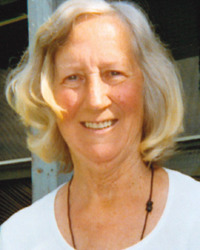
Virginia Kerley Hendren, age 81, of North Wilkesboro, passed away Saturday, March 9, 2019 at Wilkes Senior Village. Ms. Hendren was born December 22, 1937 in Lincoln County to George Baxter and Rosa Bell Carpenter Kerley. Virginia was preceded in death by her parents; sisters, Stella Woodard, Polly Carter, Sue Earnhardt, Coleen Kerley; and brothers, Vaughn Kerley, Willard Leatherman, George Edward Kerley, Andy Kerley.
Surviving are her daughter, Kimberly Anderson and husband Gary of Wilkesboro; sons, John Hendren and wife Nena, Michael Treadway, Rick Treadway all of Moravian Falls; and grandchildren, Heather, Taylor Anderson, Colin Hendren, Randi Dyer.
Graveside service will be held 11:00 a.m. Wednesday, March 13, 2019 at the Parker Cemetery with Rev. Jonah Parker officiating. The family has requested no food and no flowers. Miller Funeral Service is in charge in the arrangements.
Patsy Billings, 66
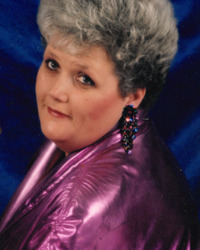
Patsy Lutricia Billings, age 66, of Wilkesboro, passed away Saturday, March 9, 2019 at Wake Forest Baptist Health-Wilkes Regional. She was born August 25, 1952 in Wilkes County to Burlie Preston and Bessie Combs Billings. Ms. Billings was a member of Rachel Baptist Church. She enjoyed games and T.V. with all her friends at Finley Village Apartments. Patsy was preceded in death by her parents; and a brother, Denny Preston Billings.
Surviving are her daughter, Monteen Billings Suarez and husband Pablo of China Grove; brother, Bill Billings and wife Debbie of Hamptonville; sister, Brenda Bryant and husband Larry of Roaring River; grandson, Cory Adkins and wife Brittany of North Wilkesboro; special friends, Margie Wells and Mable Minton; two nieces and one nephew.
Funeral service will be held 1:00 p.m. Wednesday, March 13, 2019 at Rachel Baptist Church with Rev. Brian Wiles and Rev. Michael Brinegar officiating. Burial will follow in the church cemetery. The family will receive friends at Rachel Baptist Church from 12:00 until 1:00 on Wednesday, prior to the service.
Flowers will be accepted or memorials may be made to Rachel Baptist Church or to His Light Ministry. Miller Funeral Service is in charge of the arrangements. A special thanks to the staff at Westwood Hills.
Ralph Crews, 81
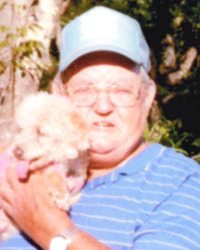
Ralph Clarence Crews, age 81, of Moravian Falls, passed away Saturday at Curis at Wilkesboro. Mr. Crews was born November 19, 1937 in Wilkes County to Clarence and Vada Cardwell Crews. Ralph was a member of the Church of God. He was preceded in death by his parents; and a baby sister, Margaret Crews.
Surviving are his wife, Louise Lowe Crews; his beloved dog, Cookie; sister, Christine Key of Kannapolis; brothers, Grady Crews and wife Ima Lee of Purlear, Robert "Lester" Crews of Wilkesboro, Levi Crews and wife Irene of Lenoir; several nieces and nephews.
Funeral service was March 11, at Miller Funeral Chapel with Rev. Jim Storts officiating. Burial followed in the Laws Family Cemetery on Price Road. Miller Funeral Service is in charge of the arrangements.
Betty Messick, 83
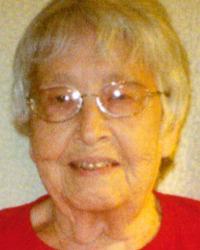
Mrs. Betty Jean Ferguson Messick, age 83 of Boomer, widow of Hoit Messick, died Saturday, March 9, 2019 at Wake Forest Baptist Health - Wilkes Medical Center.
Funeral services will be held 2:00 PM Wednesday, March 13, 2019 at Sharon Walker Baptist Church. The body will be placed in the church at 1:00 PM. Burial will be in the church cemetery.
Mrs. Messick was born May 28, 1935 in Wilkes County to Howard and Runie Eller Ferguson. She was a member of Sharon Walker Baptist Church. She was a loving wife and mother. She enjoyed her old time country music and was an avid soap opera watcher since the late 1950s.
She was preceded in death by her parents; her husband, Hoit Messick; one sister, Marlene Michael; and three brothers, Reece Eller, Bill Ferguson, and Jack Ferguson.
She is survived by two daughters, Linda Messick of Boone and Catherine Messick of Boomer; three sisters, Wanda Michael and husband, Melvin, and Barbara Russell, all of Winston-Salem, and Violet Hartley of Boomer; one brother, Tom Ferguson and wife, Joyce; sisters-in-law, Iris Ferguson and Claudette Eller of Boomer; Jeanette Haynes of North Wilkesboro, Anne Mourie of Ashtabula, OH, and Kaye Welborn of Wilkesboro; along with many nieces and nephews.
Flowers will be accepted or memorials made to Sharon Walker Baptist Church Cemetery Fund.
Arnold Bowlin, 86
Mr. Arnold "Arn" Ray Bowlin, age 86 of North Wilkesboro, died Saturday, March 9, 2019 at his home.
Funeral services were March 12, at Reins-Sturdivant Chapel with Rev. David Wellborn and Pastor Arvil Perry officiating. Burial will be in Piney Ridge Cemetery in Millers Creek. Mr. Bowlin was born April 27, 1931 in Wilkes County to George Harrison and Mary Jane Bare Bowlin. He was a member of Piney Ridge Baptist Church and retired from Holly Farms.
He was preceded in death by his parents; his wife, Edith Jane Miller Bowlin; one daughter, Kathy Bowlin; two sisters, Lilly Call and Delva Miller; and ten brothers, Joe, Philmore, Earl, Robert, Alvin, Thurmond, Jessie, Norman, Harlie, and John Allen Bowlin.
He is survived by two daughters, Mickey Edmiston and husband, Tommy, and Jane Chambers and husband, "Frog", all of North Wilkesboro; one son, Allen Bowlin, and wife, Sue, of Millers Creek; two grandchildren, Amanda Goforth and husband, Keith, and Kenneth Chambers and wife, Amanda; five great - grandchildren, Melanie, Madison, Garland, McKinley, and Sadie; one sister, Georgie Sheets of Millers Creek; and his two fur babies, Sam and Skeeter.
Flowers will be accepted or memorials made to Piney Ridge Baptist Church, 14890 N. NC Hwy 16, Millers Creek NC 28651.
Christine Lineberry, 80
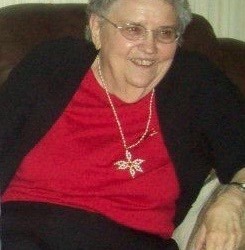
Christine Joyce Lineberry, age 80, of North Wilkesboro, passed away March 9, 2019 at SECU Hospice Center in Yadkin County. Ms. Lineberry was born July 23, 1938 in Wilkes County to Roby and Belvia Mae Dillard. Ms. Lineberry was a member of Zion Baptist Church on Yellow Banks Road. She was preceded in death by her parents; and one brother, Virgil Billy Lineberry. Ms. Lineberry is survived by a number of cousins.
Funeral services were March 11, at Zion Baptist Church with Rev. Roger Jennings and Rev. Sammy Taylor officiating. Burial followed in the church cemetery.
The family has requested no food. Miller Funeral Service is in charge of the arrangements.
Odell Lane, 91
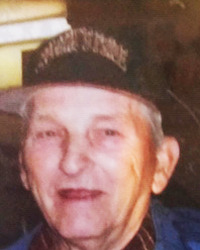
Mr. Odell Lane, 91 of Millers Creek, husband of Annie Osborne Lane, died Friday, March 8, 2019 at Wake Forest Baptist Health - Wilkes Medical Center.
Funeral services were March 11, at Reins-Sturdivant Chapel with Rev. Roy Putnam officiating. Burial was in Mountlawn Memorial Park.
Mr. Lane was born November 26, 1927 in Wilkes County to Mun White and Dora Lane. He was a timber cutter and an avid hunter. He attended Cricket Baptist Church.
He was preceded in death by his parents and one sister, June Wagoner.
Mr. Lane is survived by his wife, Annie Osborne Lane, of the home; one son, Jerry Lane and wife, Darline, of Millers Creek; four grandchildren, Ronnie, Jeffery, Melissa and Jessica; six great-grandchildren; and one brother, Gaither Lane of Millers Creek.
Tallmadge Anderson, 87
Mr. Tallmadge Killis "Tam" Anderson, age 87 of North Wilkesboro, passed away Thursday, March 7, 2019 at Wake Forest Baptist Medical Center in Winston Salem.
Funeral services were March 10, at Flint Hill Baptist Church with Pastor Kevin Souther officiating. Entombment will be in Mountlawn Memorial Park Mausoleum.
Mr. Anderson was born November 28, 1931 in Wilkes County to Dewey and Hessie Shew Anderson. He was retired from American Drew and attended Flint Hill Baptist Church.
In addition to his parents, he was preceded in death by a son, Danny Talmadge Anderson; a grandchild, Amanda Cleary; and nine siblings, Reathie Bowers, Vecie Clonch, Lessie Richardson, Slyvia Blackburn, Dorothy Kilby, Joyce Stokes, Dwight Anderson, Dewey Junior Anderson and Wade Anderson.
He is survived by his wife, Ruth Davis Anderson of the home; a daughter, Frances Cleary and husband, Brent, of North Wilkesboro; four grandchildren, Martin Cleary, Matthew Cleary, Phillip Anderson and Mark Anderson; three great grandchildren, Caitin Keeran, MacKenzie Cleary and Patrick Cleary; three sisters, Gladys Nichols, Mary Alexander and husband, Edward, and Barbara Anderson of North Wilkesboro; and a sister in law, Helen Turner and husband, Benny, of Wilkesboro; and several nieces and nephews.
In lieu of flowers memorials may be made to the Ruby Pardue Daycare Center PO Box 984 North Wilkesboro, NC 28659 or Flint Hill Baptist Church 1425 Flint Hill Road, North Wilkesboro, NC 28659.
Roger Hamby 74

Mr. Roger Luther Hamby age 74 of Ferguson, passed away Wednesday, March 6, 2019 at Watauga Medical Center.
Funeral services were March 10, at Mt. Pleasant Baptist Church Prayer Chapel with Rev. Louella Marley and Rev. Roy Smith officiating. Burial was in Mt. Pleasant Baptist Church Cemetery.
Mr. Hamby was born May 31, 1944 in Caldwell County to Luther and Elsie Hamby. He owned and operated a concrete finishing business.
Roger spent his working years in the concrete finishing business. In addition to his parents, Mr. Hamby was preceded in death by a brother; Tony Hamby.
He is survived by his wife; Sue Ayers Hamby of the home, a daughter; Pamela Sue Hamby (Chris) of North Wilkesboro, a son; Roger Kim Hamby and wife Jerri of Boomer, a grandson; Roger Briar Hamby (Kimmie), a sister; Violet Lea Hamby of North Wilkesboro, four brothers; Travis Roland Hamby (PY) and wife Patricia or North Wilkesboro, Ralph Hamby and wife Jodi of Traphill, Robert Hamby and wife Linda of Purlear and Michael Hamby and wife Nona of Jonesville.
Flowers will be accepted or memorials may be made to the American Cancer Society PO Box 9 North Wilkesboro, NC 28659 or Mt. Pleasant Baptist Church Cemetery Fund 239 Champion Road, Ferguson, NC 28624.
Mount Pleasant Fire Department served as Pallbearers. Grandson Roger Briar Hamby was Honorary Pallbearer.
Joseph Combs, 93

Joseph Carl Combs, age 93, of North Wilkesboro, passed away Tuesday, March 5, 2019 at Wake Forest Baptist Health-Wilkes Regional. He was born December 12, 1925 in Wilkes County to Robert Woodley and Lura Gregory Combs. He attended Mtn. View Baptist Church when he was young. Mr. Combs was preceded in death by his parents; his wife, Melba Chambers Combs; his son, Robert Allen Combs, Sr.; brothers, Gene Combs and Virgil C. "Buddy" Combs; and sisters, Irene Combs, Grace Combs Johnson and Mildred Combs Brooks.
Surviving are his daughter, Linda Roten and husband Fred of Wilkesboro; son, David Leon Combs and wife Betty of North Wilkesboro; daughter-in-law, Brenda Combs of North Wilkesboro; grandsons, Robert Allen Combs Jr., Timothy James Roten, David Leon Combs, Jr.; great granddaughter, Taylor Nicole Combs; brothers, Robert Fred Combs and Luther Dale Combs both of Hays, Lester Herman Combs of Summerfield, Earl Dean Combs of North Wilkesboro; sisters, Berchie Mae Atwood, Mary Combs Brown both of Lenoir, Carol Ann Brewer and husband Cecil of Hudson; and numerous nieces and nephews.
Funeral service was March 8, at Miller Funeral Chapel with Rev. Brady Hayworth officiating. Burial followed in Christian Home Baptist Church Cemetery. Flowers will be accepted or memorials may be made to Wake Forest Baptist Health and Hospice, 126 Executive Drive, Wilkesboro, NC 28697. Miller Funeral Service is in charge of the arrangements.
Shelby Bentley, 80
Mrs. Shelby Jean Childress Royal Bentley, age 80 of Ronda, passed away Tuesday, March 5, 2019 at Dunmore Plantation in Dobson.
Funeral services were March 7, at Reins Sturdivant Chapel with Bro. Kevin Blevins and Bro. Josh Blevins officiating. Burial was in Cranberry Baptist Church Cemetery.
Mrs. Bentley was born June 3, 1938 in Wilkes County to Fred Childress and Mary Novella Owens Childress. She was a beloved mother, homemaker, gardener and seamstress. Mrs. Bentley was a member of Flint Hill Baptist Church.
In addition to her parents, she was preceded in death by her husbands; Robert Eugene Royal and Gaither (L.B.) Bentley.
She is survived by two daughters; Vickie Dianne Linville and husband Dumont of Roaring River and Nancy Joann Holbrook and husband Jarvis of Roaring River, four sons; Toney Eugene Royal of Ronda, Dalmus Earl Royal of Ronda, Donnie Rayvon Royal and wife Christine of Ronda and David Ronnie Royal and wife JoAnn of Ronda, ten grandchildren; eight great grandchildren and several great great grandchildren; three sisters; Betty Combs and husband Roby of Hays, Annie Mae Dula of Boomer and Ethel Church and husband Colin of North Wilkesboro and two brothers; Jim Childress and wife Nancy of North Wilkesboro and Johnny Childress and wife Diane of Millers Creek.
Flowers will be accepted or memorials may be made to Alzheimer's Association 4600 Park Road Suite 250 Charlotte, NC 28209 or Mtn. Valley Hospice 688 North Bridge Street Elkin, NC 28621.
Talmadge Wood, 69

Rev. Talmadge Michael Wood, 69, of North Wilkesboro, passed away on Monday,
March 4, 2019.
Talmadge was born on July 31, 1949 in Wilkes County to Lester Lee Wood and Mary Blanche Holleman Wood.
Talmadge is preceded in death by his parents; sisters, Barbara Pennington, Shirley Ann Lowery, Nancy Church; brother Edward "Ronald" Wood.
Talmadge is survived by his wife of 48 years, Judy Marlene Eller Wood; daughter, Cindy Sparwasser and husband, Carl of Hays; sons, Adam Wood and wife, Michelle of Wilkesboro, Andrew Wood of Purlear; sister, Evelyn Horton of Pine Level, NC; grandchildren, Jared Sparwasser and wife, Kimberli of Hays, Aj Sparwasser and Micala, also of Hays; great-grandchildren, Dylin, Joseph and Eva Sparwasser, all of Hays.
The funeral service was March 8, 2019 at 12p.m. at Mountain View Baptist Church in Hays with Rev. Brian Blankenship and Rev. Adam Wood officiating. Burial followed in the church cemetery.
Adams Funeral Home of Wilkes and cremation services has the honor of serving the Wood Family.
Pauline McLean, 81
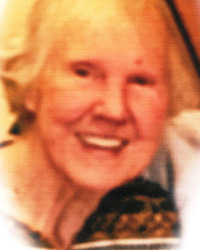
Pauline Rhodes McLean, age 81, of North Wilkesboro, passed away Monday, March 4, 2019 at Wilkes Senior Village. She was born September 22, 1937 in Pageton, West Virginia to Ray Vance and Della Mae Rhoades Rhodes. Pauline graduated in 1955 from Mountain View High School and continued her educational pursuit enrolling in Wilkes Community College. She was a dedicated and valuable employee of Lowe's Home Improvement in Wilkesboro for 48 years retiring in 2014; Pauline was preceded in death by her parents; her son, Mitchell "Mitch" McLean; and brother, Jackie Rhodes.
Surviving are her brother, Eddie "EC' Rhodes and wife Barbara of North Wilkesboro; grandsons, Jackson McLean and Fin McLean both of Wilkesboro; daughter-in-law, Elizabeth "Beth" McLean of Wilkesboro; nieces, Adele Girling of Ipswich, England, Amanda Freeman of Toronto, Canada, Fiona Richardson of Charleston, South Carolina; Lisa Sergi of Charleston, South Carolina; nephew, Jonathan Rhodes of San Antonio, Texas; and several extended family members residing throughout Wilkes County.
Funeral service was March 9, with Rev. Claude "Bo" Rhodes officiating. Burial followed in Mountlawn Memorial Park. Miller Funeral Service is in charge of the arrangements.
W. Clay Alexander, age 94
Mr. W. Clay Alexander, age 94 of Roaring River passed away Sunday, March 3, 2019 at Wake Forest Baptist-Wilkes Medical Center.
Funeral services were March 7, at White Plains Baptist Church with Pastor William Souther officiating. Burial was in the church cemetery.
Mr. Alexander was born May 9, 1924 in Wilkes County to Pegram Summerfield and Hessie Myers Alexander. He served in the United States Navy during World War II. Mr. Alexander was a 1941 graduate of Roaring River High School and he was a member of White Plains Baptist Church.
In addition to his parents, he was preceded in death by his wife; Agnes Shoemaker Alexander and a sister; Edna Wells.
He is survived by a daughter; "Jan" Jeanette Jacob and husband Danny of North Wilkesboro, two grandchildren; "Ben" Benjamin Jacob and wife Jamie of Portsmouth, VA, Peter Jacob and wife Jada of Fort Benning, GA, three great grandchildren; Peter "Beau", Tate, and Rhett Jacob and a sister; Mary Sue Foster of Roaring River.
1 note
·
View note
Text
9 Things to Know About the Harlem Renaissance
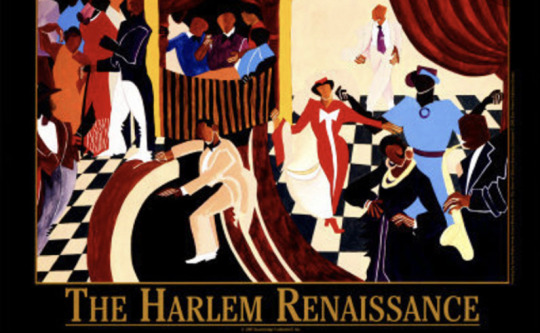
The Harlem Renaissance was a Black cultural, social and artistic phenomenon which peaked in the 1920s. While the movement is centered in the Harlem neighborhood in New York City, the movement was a national and international explosion of Black arts that was “encouraged and directed by leaders of the Civil Rights establishment for the paramount purpose of improving race relations” (Lewis) and eventually spread through the United States and reached as far as Paris. Termed as “the New Negro Movement” by scholars of the time period, the Renaissance spans literature, music, dance, acting and artistic outputs. Here are 9 things to know about the Harlem Renaissance.
#1 Black Literature prior to the Renaissance was in a huge decline: Prior to Paul Laurence Dunbar (1872-1906) and Charles Chesnutt (1858-1932), most Black literature was centered around slave narratives and far less on fiction or poetry. Because Charles Chesnutt was unable to secure a firm living from his writing, and Paul Laurence Dunbar died of tuberculosis at the height of his creative output, literature by Black authors were generally non-fiction. Until 1922 with the release of Claude McKay’s (1889-1948) book of poetry Harlem Shadows, there was no other poetry volume since Dunbar’s death in 1906. W.E.B DuBois (1868-1963), civil rights leader and the first Black person to receive a PhD in America, wanted to see the creative outputs drastically improved in the forms of fiction and poetry as he felt that “until the art of [Black] folk compels recognition, they will not be rated as human” (Lewis). This encouragement and eventual support among Black organizations (see #4) lead to an abundant Black output of fiction and poetry.
#2 The Great Migration was an integral contributor to how the Renaissance came to be, but so was the ending of World War I: The migration of Blacks from the cruel segregation of the South to the West, Midwest and East for opportunities in the industrial factories was a significant contributor to the “Great Migration” of Blacks to places such as Harlem. Plessy v. Ferguson (1896) cemented legal separation of the races and doomed any hope of the government supporting increasing freedoms for Blacks, especially in the South. In addition, an uptick in lynchings as reported by Ida B. Wells (1862-1931) in her book the Red Record (1895) due mostly to Black businesses becoming competition for white businesses and the lack of law enforcement to protect Black people from white terror, Blacks wanted to move where there was a promise of freedom. However, another major contributor to the Renaissance was also the end of World War I in 1918. Returning Black soldiers from the war were increasingly defiant to dealing with segregation in the South which lead to violence against soldiers. A new air of change was desired by Black people and they were determined to seek that out. By 1918, more Blacks had ventured from the South, began opening businesses, attending and graduating colleges, founding affluent Black areas of cities (such as Greenwood in Tulsa later known as “Black Wall Street”) and working very diligently to attain wealth in an increasingly hostile country.
#3 The Harlem Renaissance spanned roughly 18 years and took place in three “phases: Of course, with any literary movements, it can be difficult to pinpoint the specific dates, but scholars now have placed the years of the Harlem Renaissance as 1917 until March 1935 with the Harlem Riots. There were three major phases that happened during that time:
The first phase was from 1917 until 1923. Some of the major works that came from this period was McKay’ s militant poem “If We Must Die” (1919) and his book of poetry Harlem Shadows (1922), Jean Toomer’s (1894-1967) Cane (1923).
The second phase was from 1924 until mid-1926. The major texts of this period were Jessie Redmon Fauset’s (1882-1961) There is Confusion (1924), Walter Francis White’s (1893-1955) The Fire in the Flint (1924), and Countee Cullen’s (1903-1946) Colors (1924).
The last phase was from 1926 until 1935 and was the most prolific. The major texts from this period were Langston Hughes’ (1902-1967) The Weary Blues (1926), Not Without Laughter (1930) and The Ways of White Folks (1934), Alain Locke’s (1885-1954), “The New Negro” (1926), Fire (1926) edited by Wallace Thurman (1902-1934) and his novel The Blacker the Berry... (1929), Nella Larsen’s (1891-1964) Quicksand (1928), Rudolph Fisher’s (1897-1934) Walls of Jericho (1928) and The Conjure Man Dies (1932), Arna Bontempt’s (1902-1973) God Sends Sunday (1931) and Black Thunder (1936), and Zora Neale Hurston’s (1891-1960) Jonah’s Gourd Vine (1934) and Their Eyes Were Watching God (1937).
#4 The biggest output of the Renaissance was spearheaded by the National Urban League and the NAACP as a means of literary activism: One of the most surprising aspects of the Harlem Renaissance is the fact that civil rights organizations such as the National Urban League and the NAACP used their magazines The Opportunity and The Crisis (respectively) to catapult new writers and to charge writers with being true to themselves and working in the vein of activism for the culture. Orchestrated by W.E.B. DuBois and the National Urban League’s editor Charles S. Johnson (1893-1956), many amenities were made for writers to be able to submit their work for prizes. This also allowed writers to have the opportunity to easily publish their work and receive attention from patrons and publishers to be paid for their works or financially supported. Many award topics included themes of black pride and cultural assertiveness and to share this in creative works such as fiction, poetry and drama. Towards the end of the Renaissance, new writers wanted to have the freedom to not only write about activist topics but to just freely be able to create; there was sometimes a rift between the establishment of the civil rights leaders such as W.E.B. DuBois versus many of the younger artists. In order to regain control of the movement, DuBois wrote an essay entitled “The Criteria of Negro Art” in order to set the record straight for some of the younger writers what was to be expected of this output during the Renaissance.
#5 While Marcus Garvey wasn’t considered a part of the Renaissance, his message of Black nationalism and pride through his written output contributed to the tone of racial assertiveness of the time: Marcus Garvey (1887-1940), a follower of Booker T. Washington, began building his Universal Negro Improvement Association and African Communities League (UNIA-ACL) in Harlem in 1916 with the largest growth occurring during the years from 1918-1921. In 1918, he began publishing the organization’s newspaper The Negro World which eventually was internationally distributed and translated into Spanish, French and Caribbean-patois. He began each issue with a section where he could speak to readers about Black nationalism and giving the Black race many emblematic symbols of liberation such as the flag of liberation (red, black, and green) and many different songs he wrote for the organization. In August 1920, his organization hosted the First International Conference of the Negro Peoples in Harlem hosted at Madison Square Garden; 25,000 people attended the conference and culminated in a huge parade. Several of his essays such as “Africa for Africans” and “The Future as I See It” spoke of revolution and connecting to the African roots that had been denied to the people due to slavery. Unfortunately, Garvey and W.E.B. DuBois were bitter enemies to the point that they insulted each other in writing; this was due to W.E.B. DuBois being said to have been jealous that Garvey could energize the common Black person and many saw the NAACP as a middle class and white organization that did not speak to whom Garvey could. DuBois completely looked down upon Garvey as being uneducated. In addition to that, Garvey was a fierce supporter of Booker T. Washington’s ideology and thus did not cower from W.E.B. DuBois. It is said that DuBois did play a part in Garvey’s takedown by J. Edgar Hoover’s FBI which sent him to prison and subsequently diminished his movement significantly. Despite the fact that Garvey did not directly participate in the Renaissance, his work definitely contributed to the tone of revolution, racial assertiveness and organizing that was quintessential to the Renaissance.
#6 1919 was a seminal year that lead to the biggest and most prolific output of the Renaissance: The year immediately following the end of “The Great War” (WWI) was a very violent one. Infamously known as “The Red Summer of 1919″, that summer saw outbursts of mob violence and lynchings across America. The name “Red Summer” was coined by NAACP field secretary and Harlem Renaissance writer James Weldon Johnson. That summer, 97 reported lynchings occurred which led the NAACP to hang its iconic “A Man Was Lynched” flag outside the window of their offices each time a person was lynched. Several cities dealt with race riots including in Elaine, Arkansas, and Washington, DC; the people of these cities saw horrifying deaths that seemed to be lead by white servicemen in some cases. The militant poem from McKay “If We Must Die” was produced in response to this violence. The year ended with the NAACP establishing James Weldon Johnson��s “Lift Evr’y Voice and Sing” as the Black national anthem. Many stories that sprang from the Harlem Renaissance years later told the stories of lynchings, violence and cultural turmoil seen from the Red Summer.
#7 While men were the headliners of the movement, women writers had huge contributions within the fabric of the movement: While the movement was spearheaded and led by a plethora of male voices, women were extremely instrumental within the movement. Beyond musicians like Bessie Smith and dancer Josephine Baker who both were international superstars during the Renaissance and the patronage of A’Lelia Walker (see #8), there were many women writers who contributed heavily. Zora Neale Hurston was very instrumental in naming many ideas that came about during the time-- in 1926, when Fire! was released as a collection of works by the younger writers, she nicknamed the group “The Niggerati” to show a shift from the old idea of activism propagated by DuBois. She produced stories in dialect that represented the people of Eatonville, FL as an anthropologist and produced many essays that evoked pride such as “How It Feels to Be Colored Me” and several volumes of short stories. Georgia Douglas Johnson (1886-1966) was one of the poets of the time that told distinct stories of the Black woman’s experience in poems such as “The Heart of a Woman” and “I Want to Die While You Love Me”. Jessie Redmon Fauset not only produced two novels (see #3), but was the literary editor of the NAACPs The Crisis magazine and was a highly decorated and educated intellectual in Harlem. Other notable women of the time were novelist Nella Larsen, poet Gwendolyn Bennett and the eccentric artist Augusta Savage. The women of the Renaissance are showcased in the anthology The Sleeper Wakes by Marcy Knopf-Newman.
#8 A’Lelia Walker is credited as the chief African American patron of the artists of the Renaissance: A’Lelia Walker, daughter of millionaire business woman Madame CJ Walker, was a huge fixture during the Harlem Renaissance. Her brownstone in Harlem (designed by Black architect Vertner Tandy who was also a founder of Alpha Phi Alpha Fraternity), first served as a gathering space for the musicians, actors, dancers, writers and artists of the movement. She eventually converted her top floor as a salon affectionately known as “The Dark Tower”; Walker hosted the most lavish parties and was a favorite patron of the creative circles. She afforded them the opportunity to fellowship, converse, and critique upcoming works that was being produced in Harlem. Her death in 1931 was the end of this collaborative time among artists and the African American affluent being able to truly support the output of the Harlem Renaissance writing, leading to the end of the movement in 1935.
#9 The “Talented Tenth” idea was developed by WEB DuBois and featured many HBCU graduates who drove the movement: The Black “affluent” that included physicians, educators, lawyers, preachers, businesspeople, etc. “formulated and propagated a new ideology of racial assertiveness” (Lewis) led by W.E.B. DuBois who firmly believed the Black race would be saved by “its exceptional men” (DuBois). Some 10,000 men and women of a total population of ten million Blacks in 1920 was considered “affluent” and thus charged with being the examples of what Black people really were. In 1905, W.E.B DuBois in the World’s Fair in France presented an exhibit of Black excellence through photographs of the well to do and highly educated as a way to dispel the stereotypes that plagued Blacks after slavery. Of course, with the influx of Historically Black Colleges and Universities being founded in the period from 1850-1915, most of the affluent Black people were educated at HBCUs, especially for Bachelor’s degrees. In 1917, 2,132 Blacks were in colleges and universities with no more than fifty (50) attending predominately white institutions. The majority of the Black educated class attended HBCUs and those who were college educated and participated in the Renaissance were educated primarily at HBCUs such as Howard, Fisk, Lincoln, and others or were professors at HBCUs.
Works Cited and References:
DuBois. “The Talented Tenth”, 1903.
Lewis, David Levering. The Portable Harlem Renaissance Reader, 1994.
Gates, Henry. The Norton Anthology: African American Literature, 1997.
0 notes